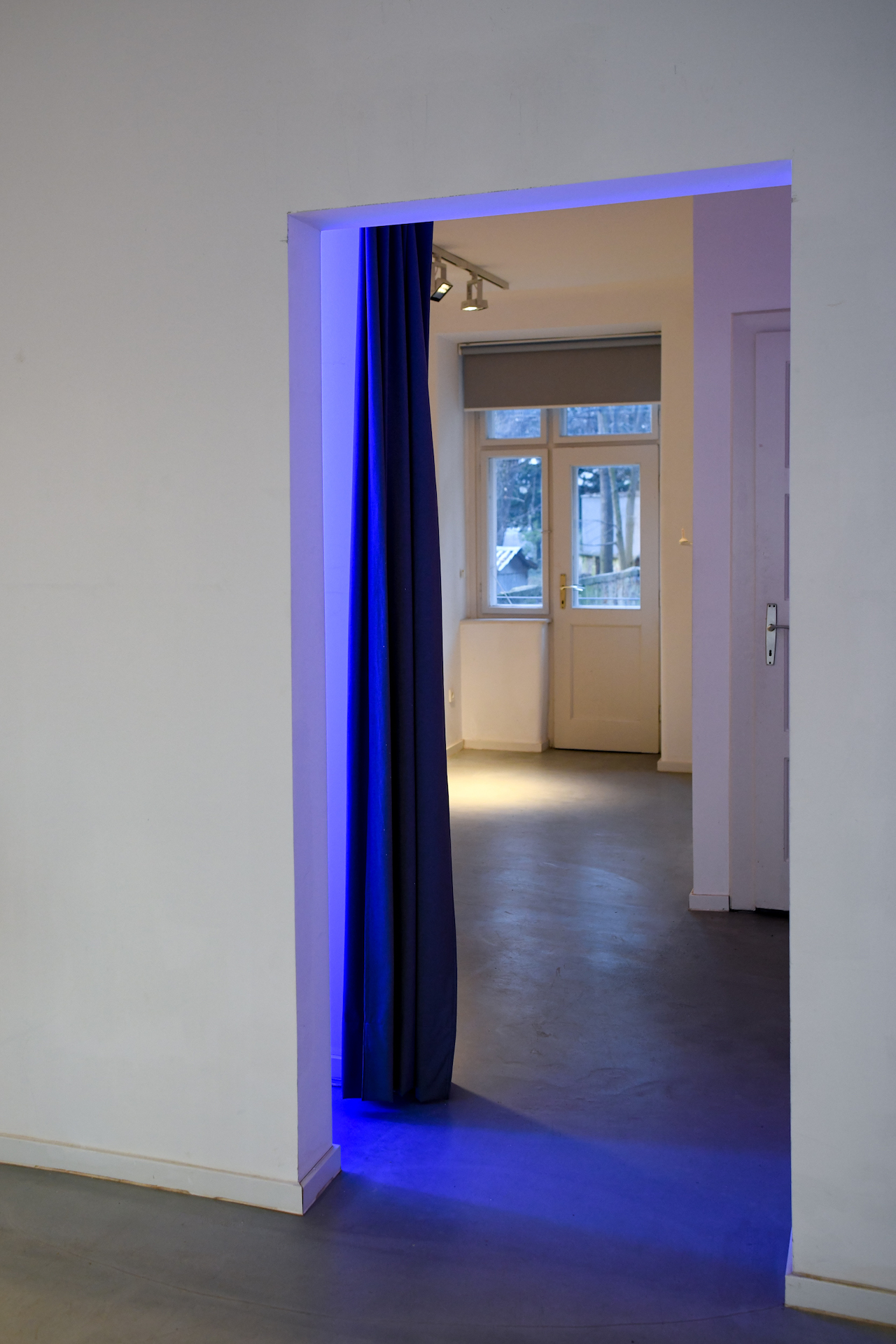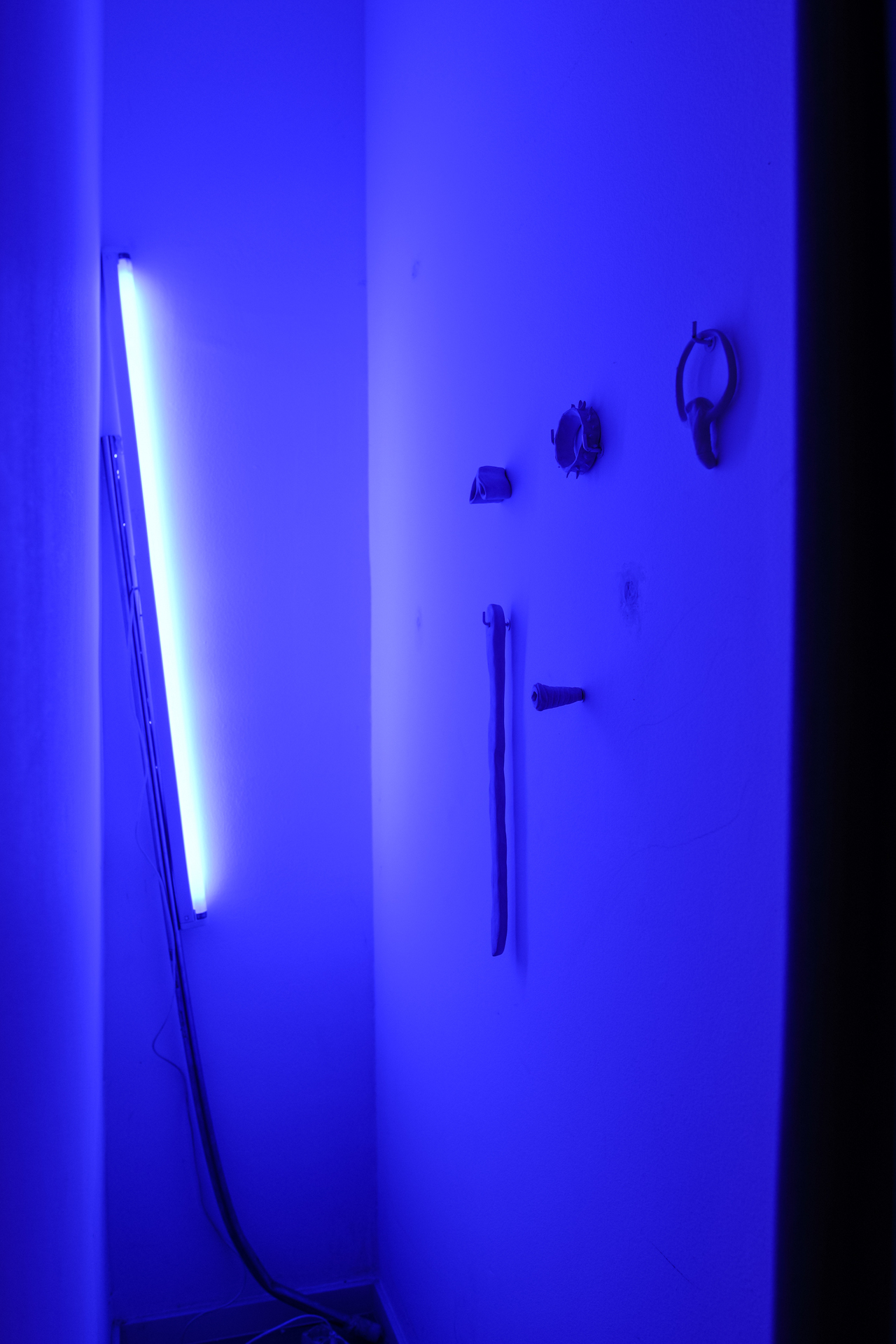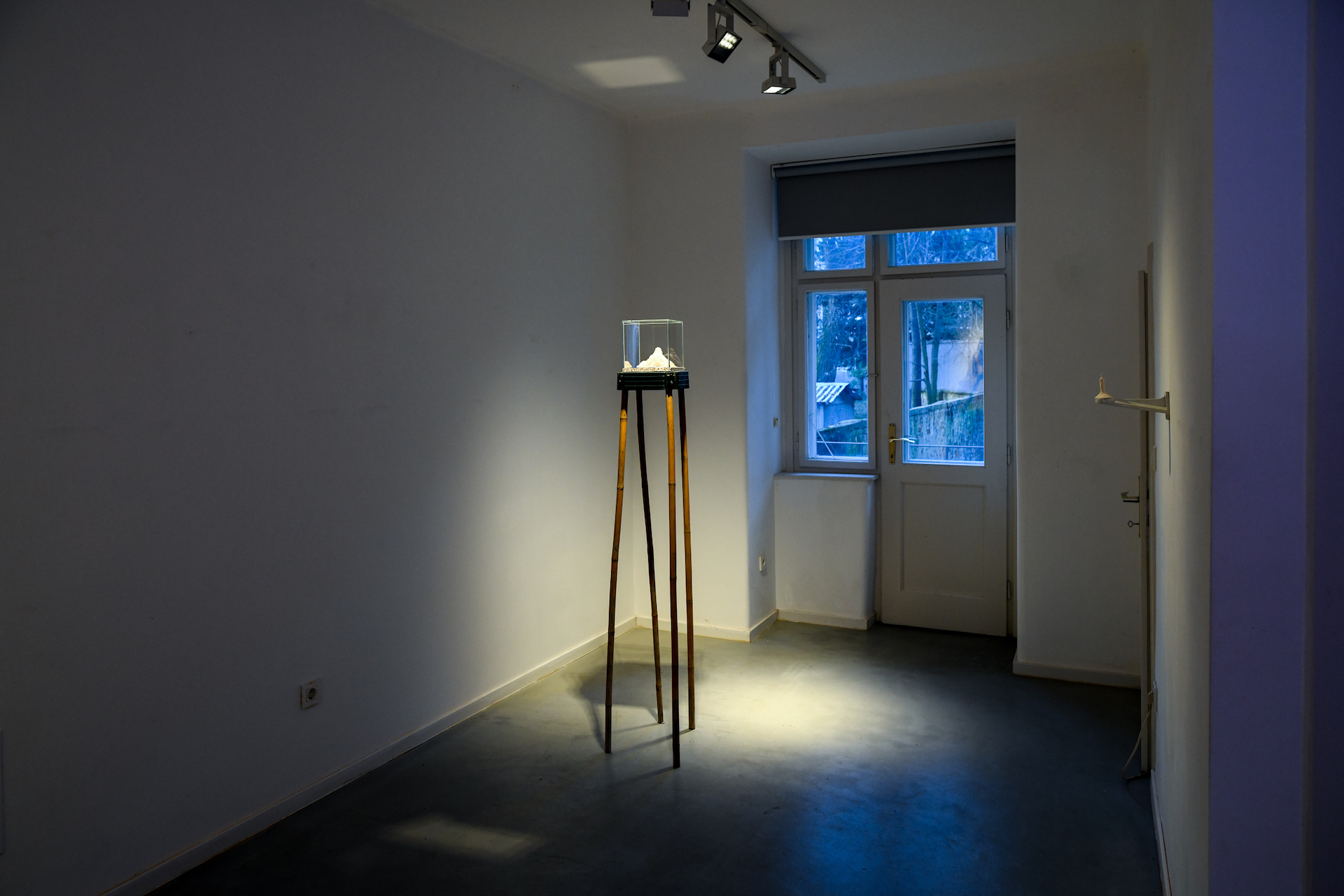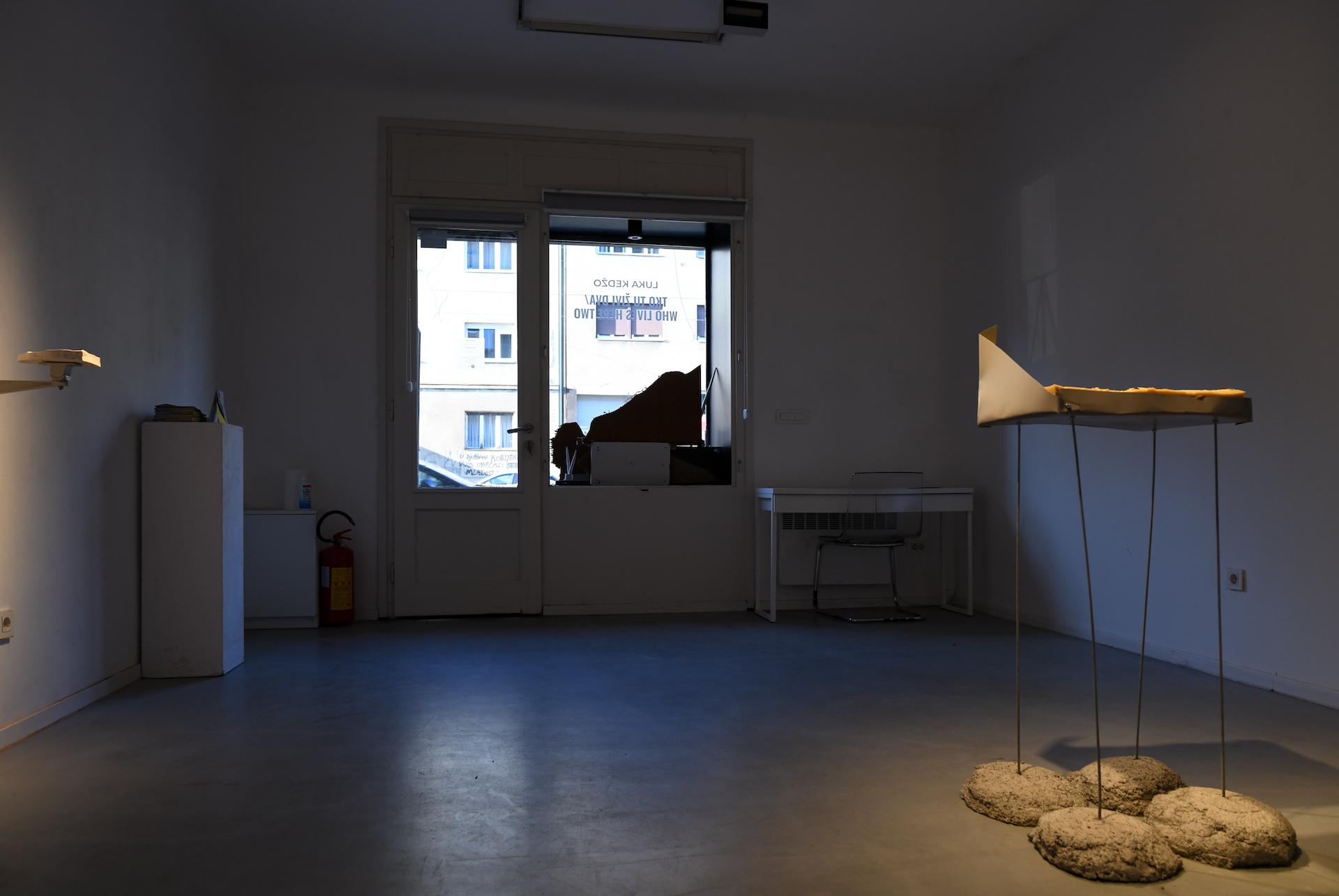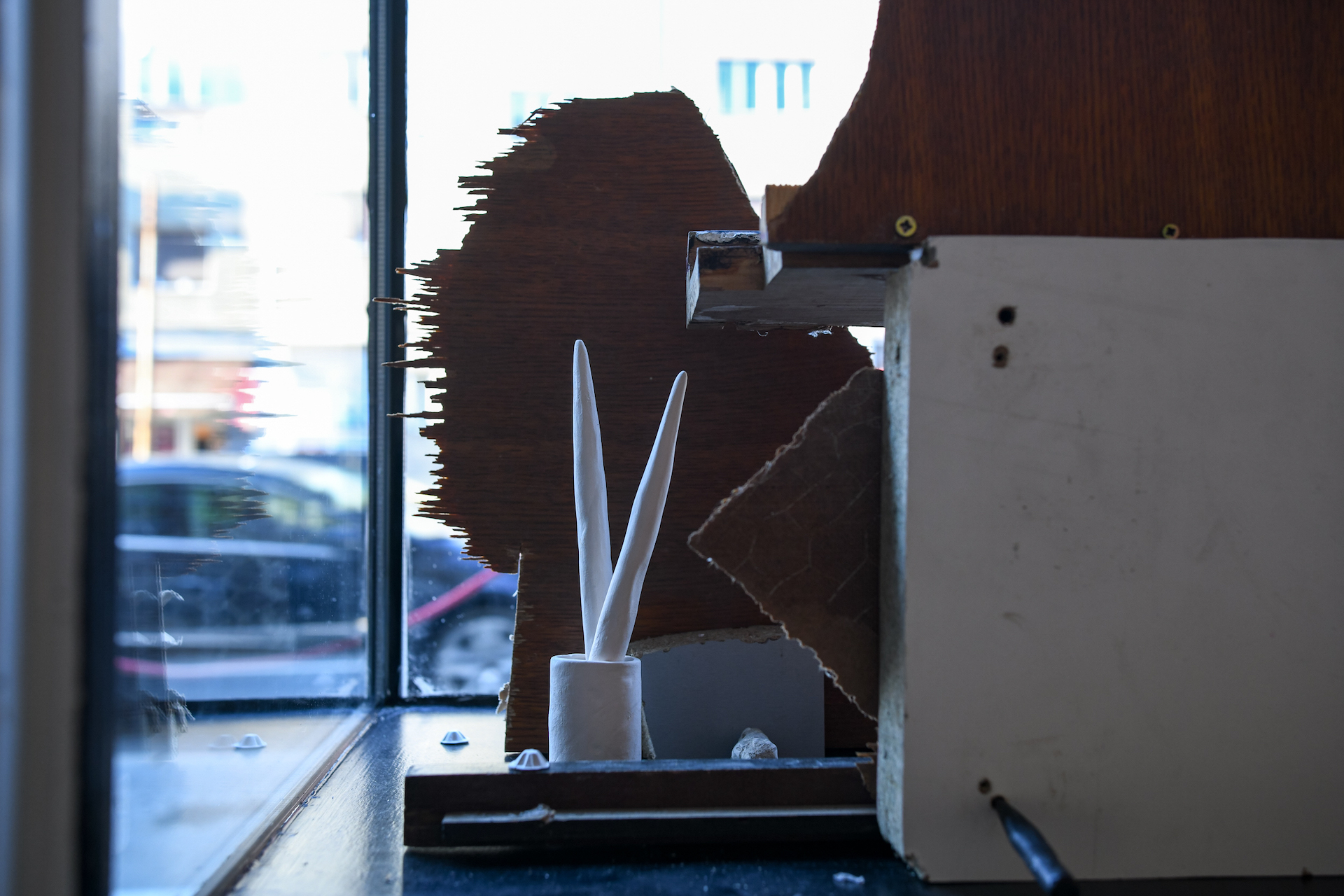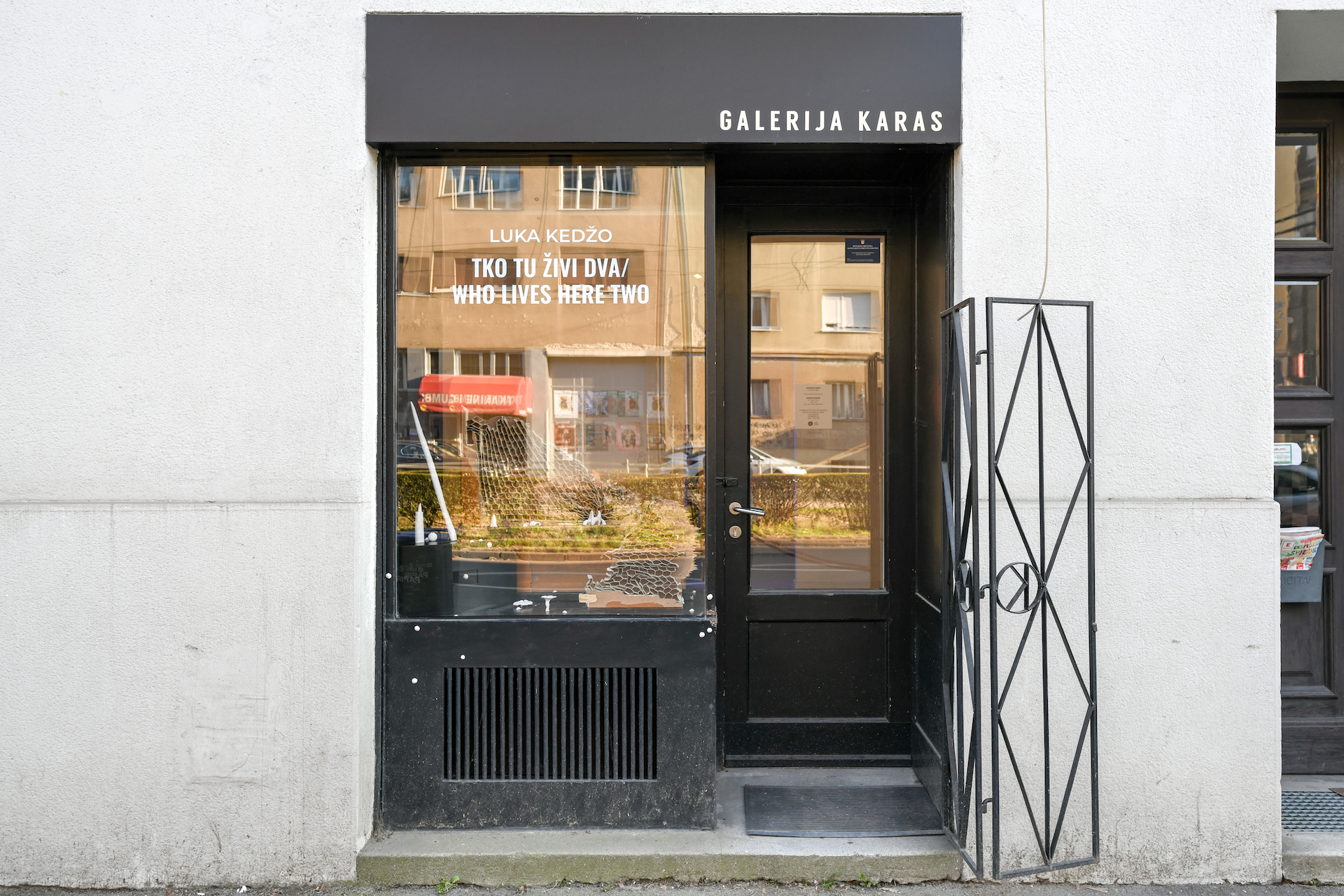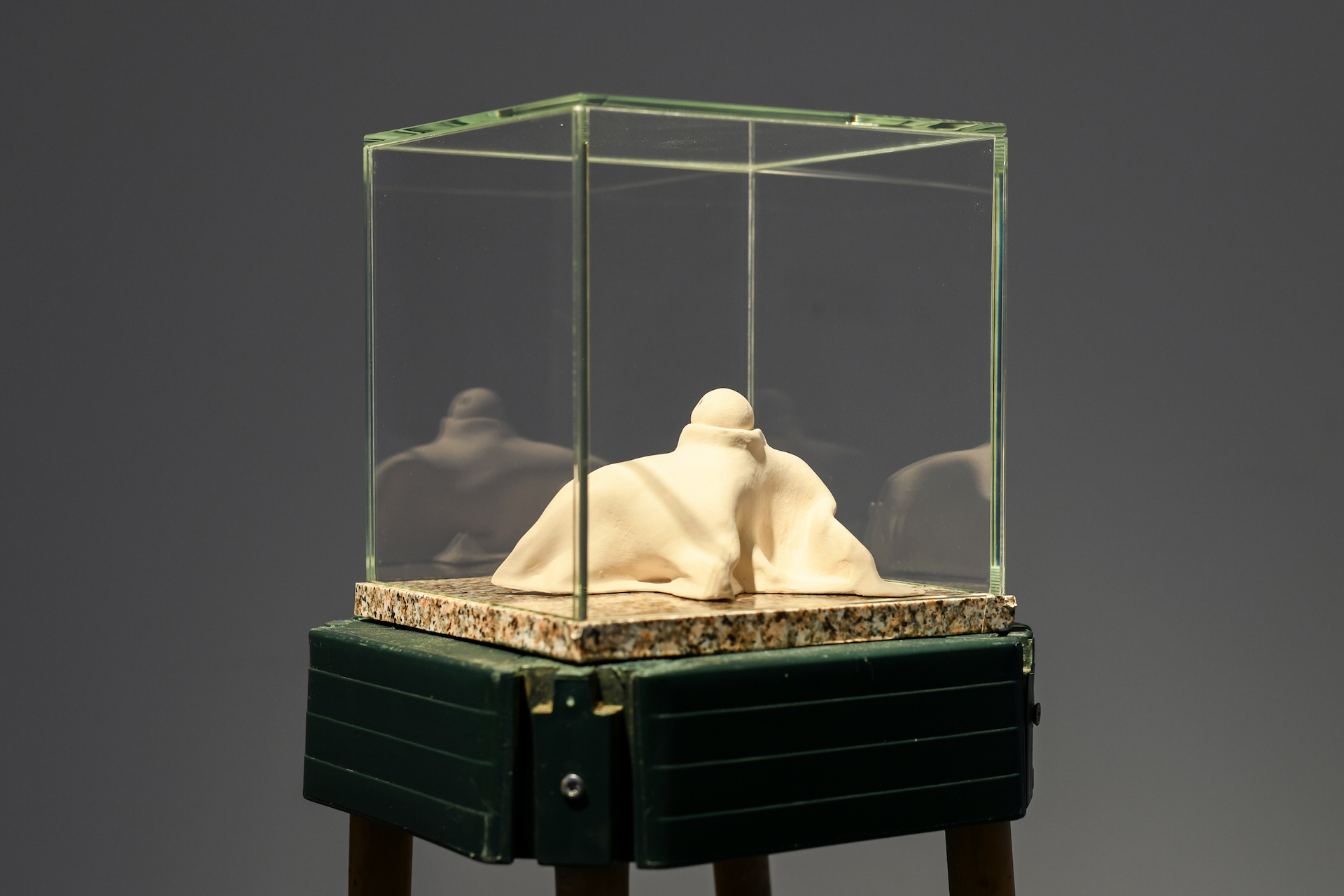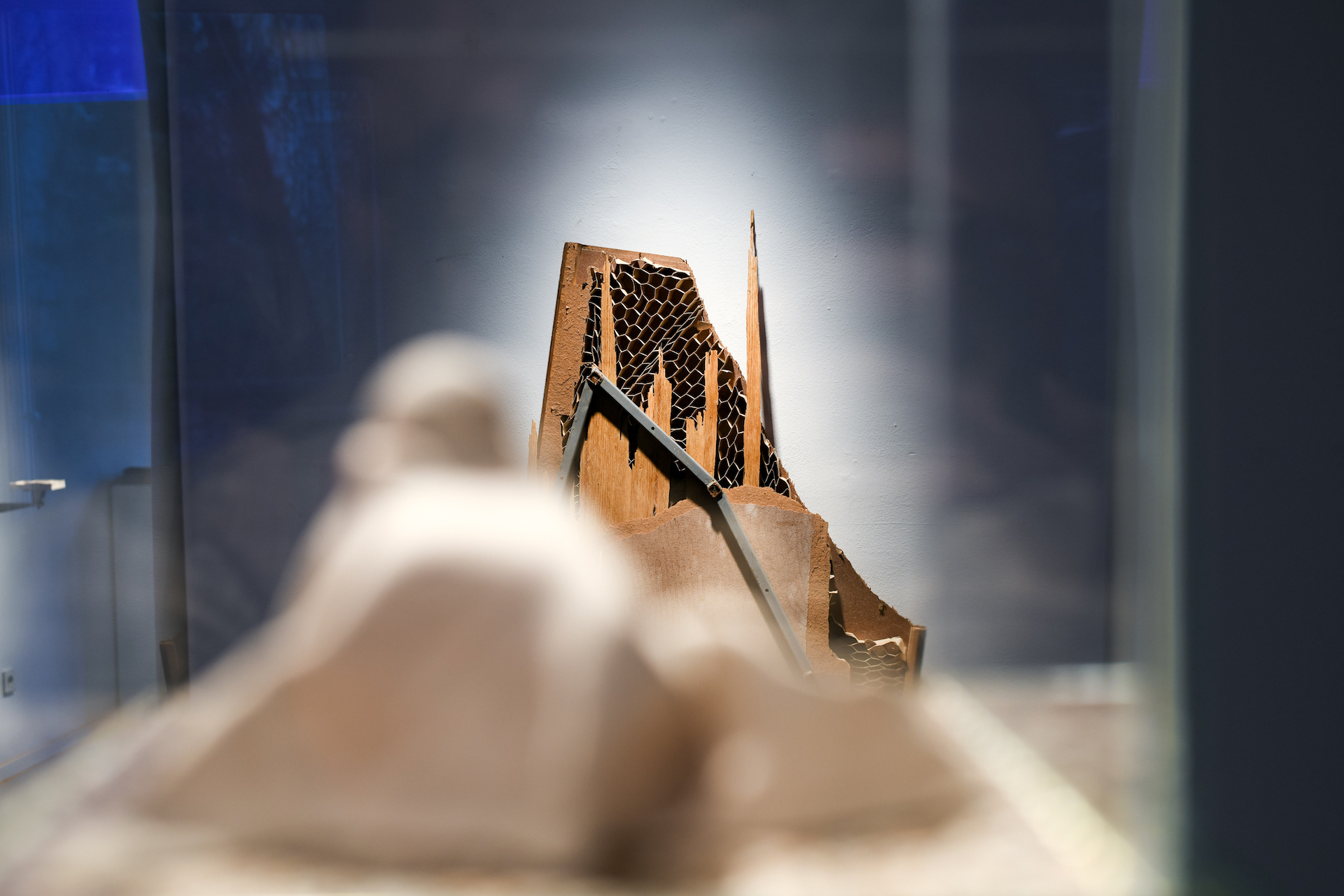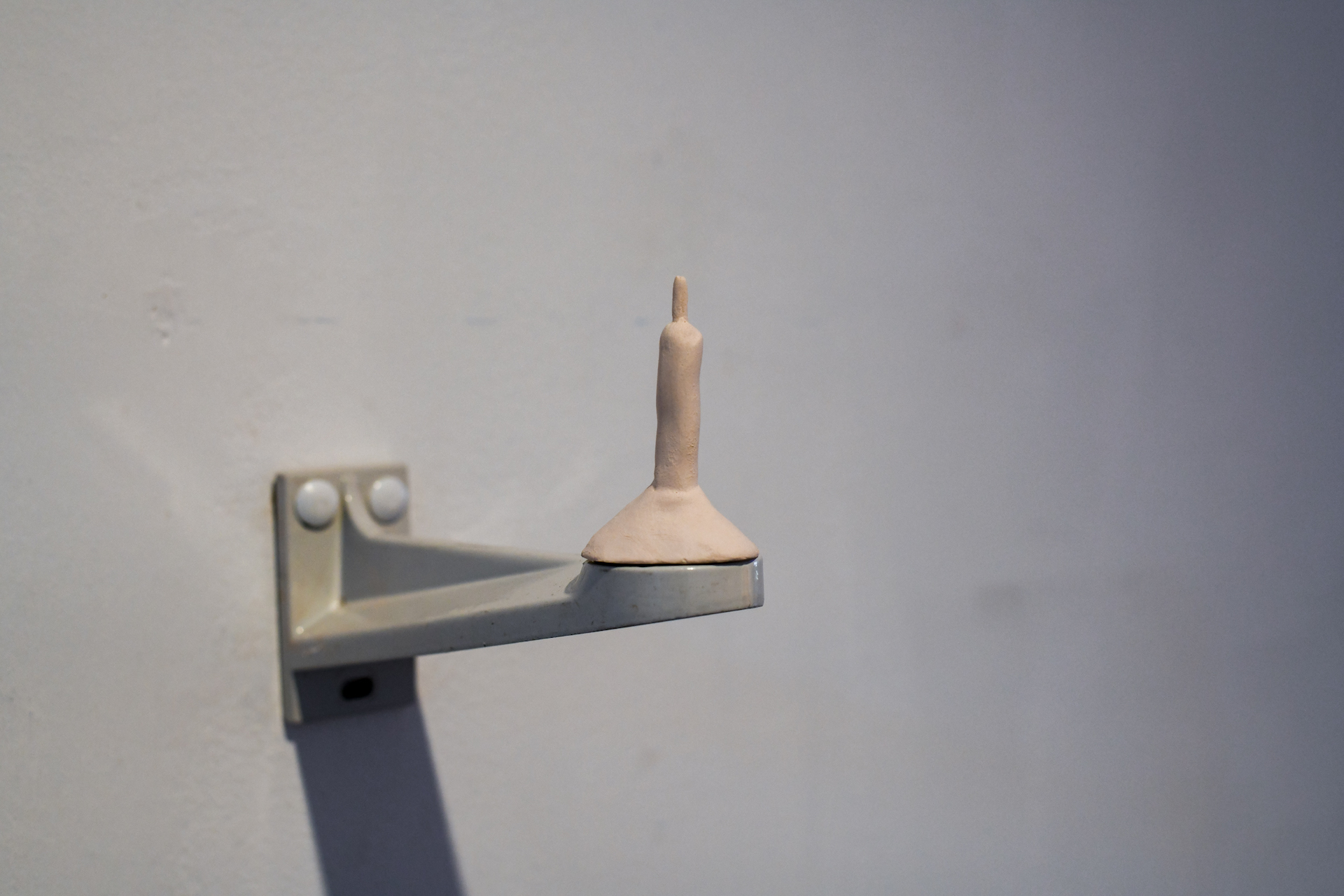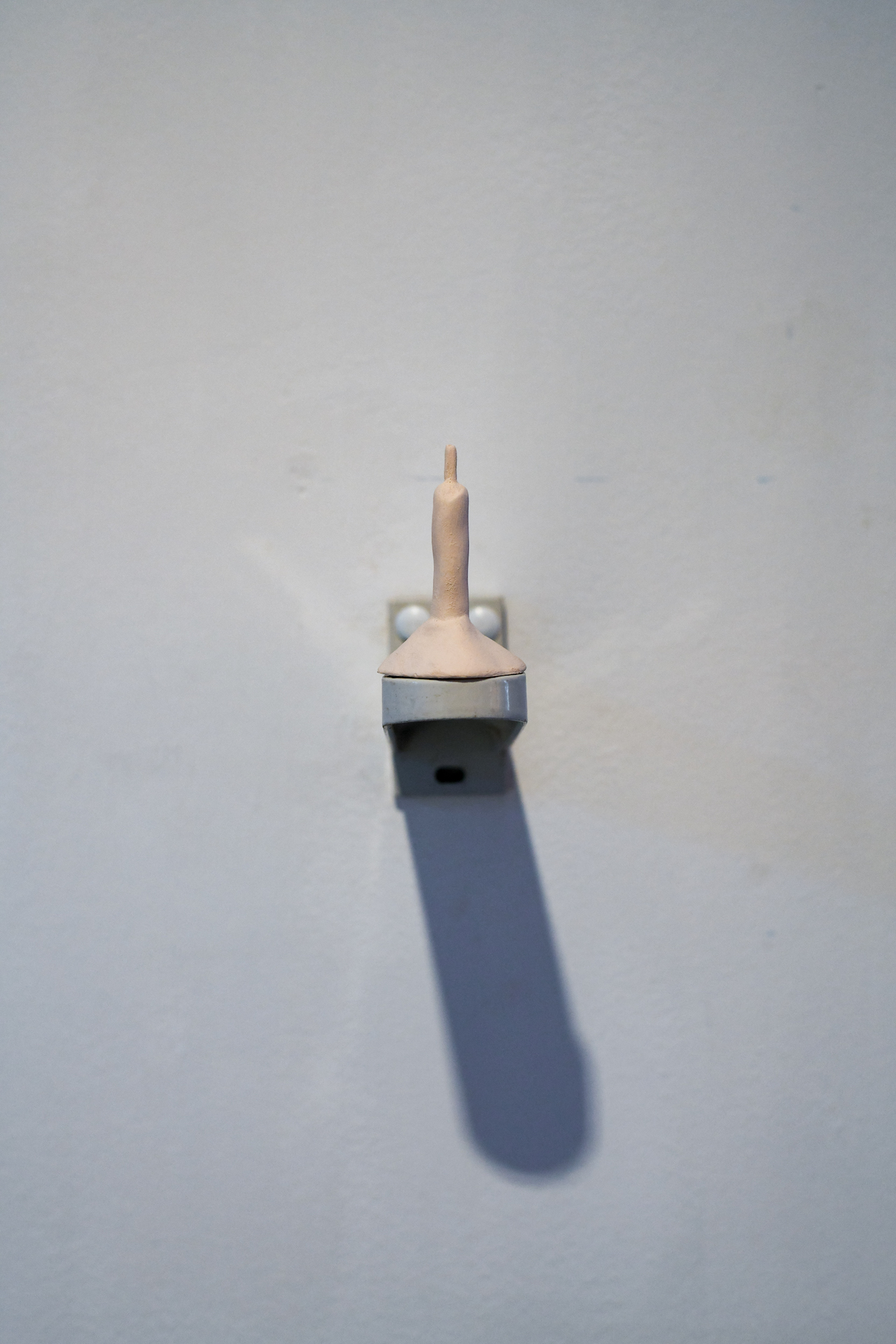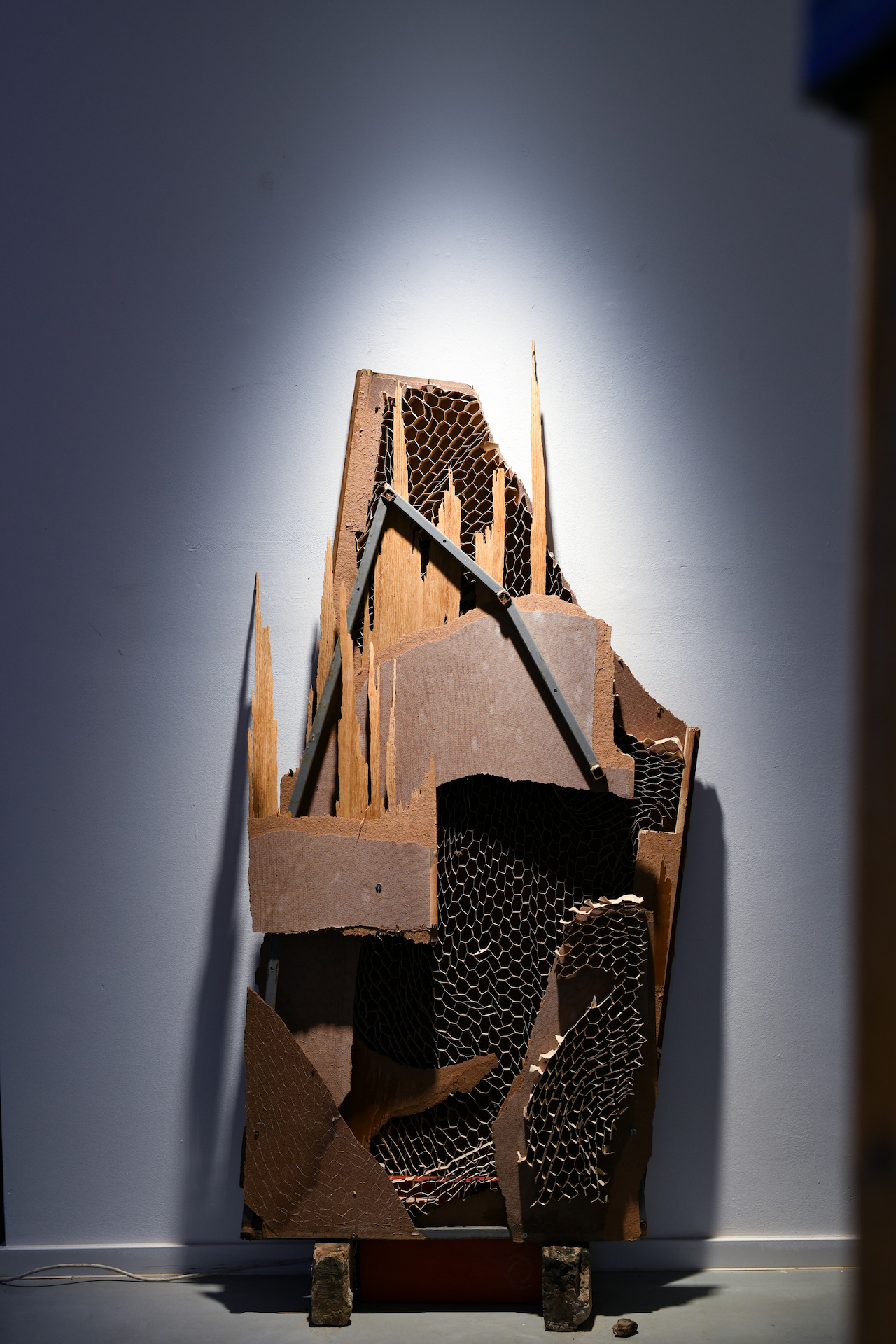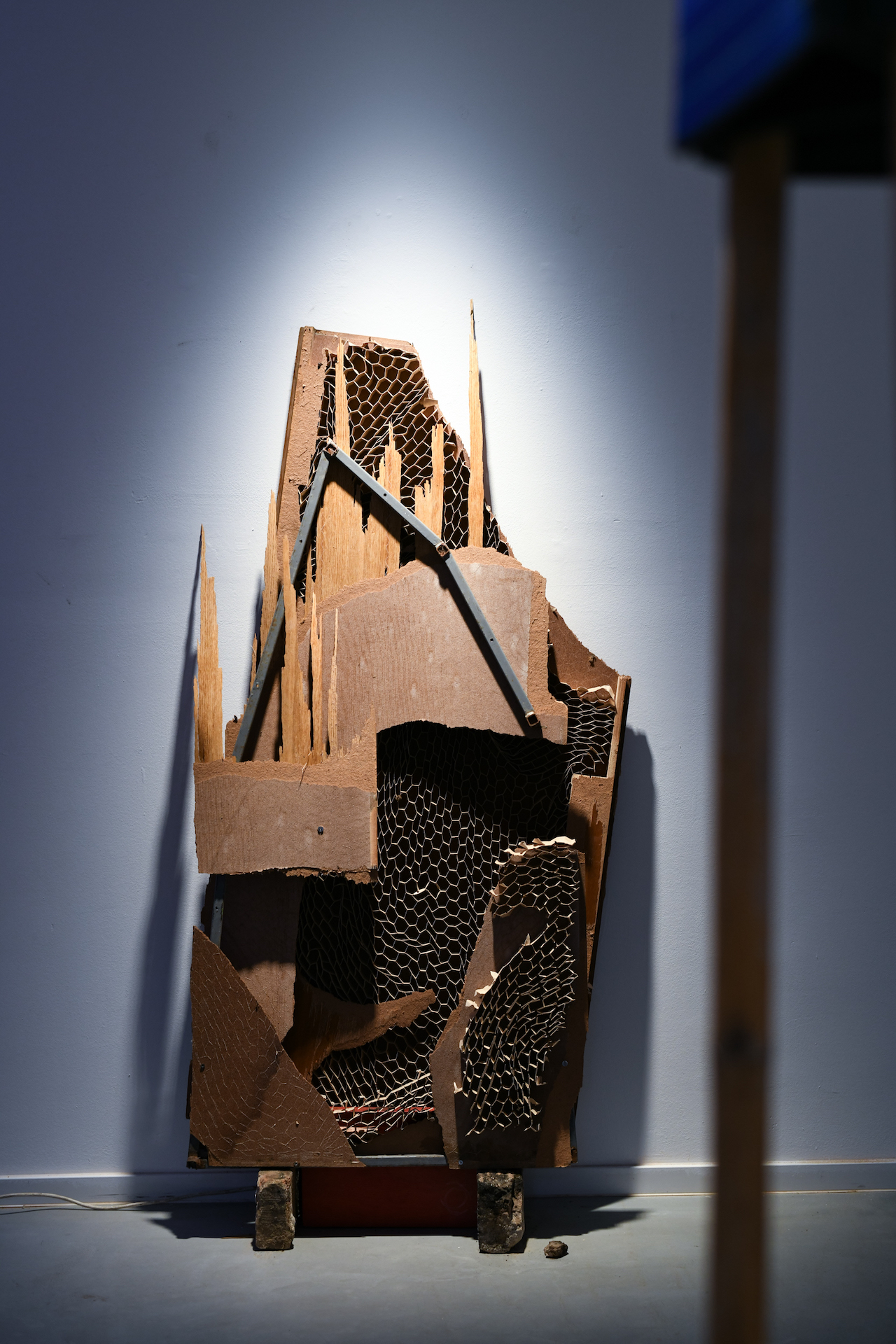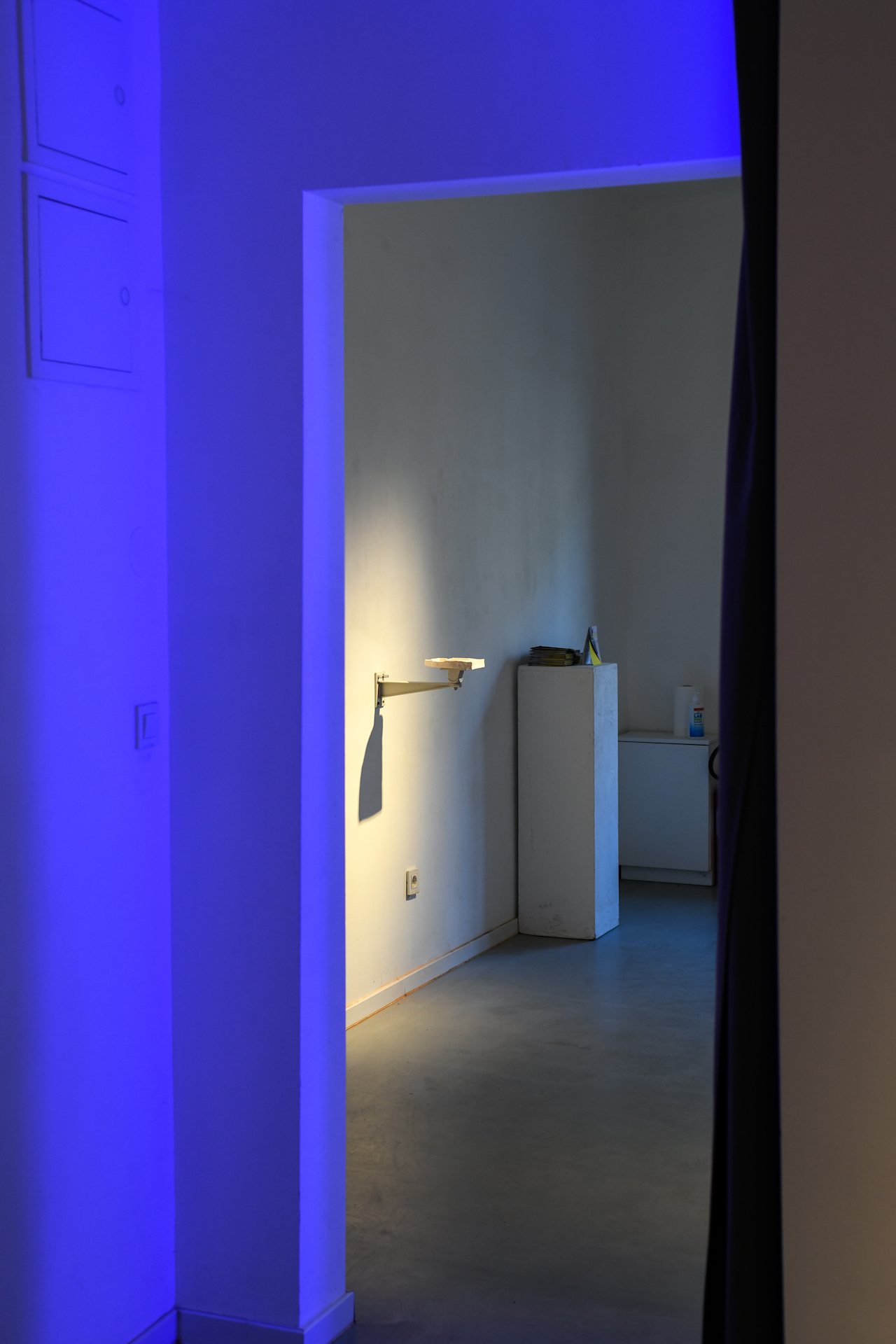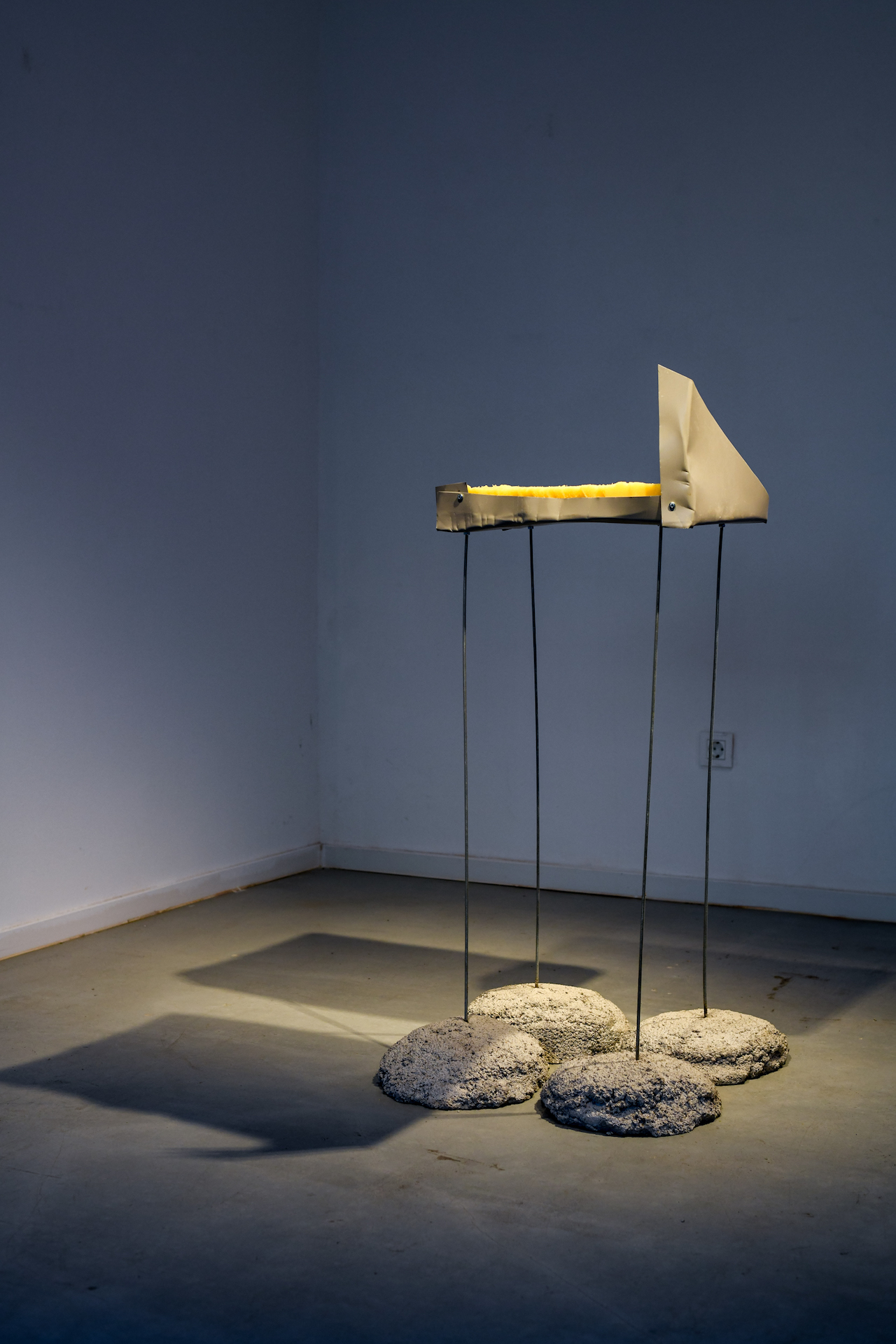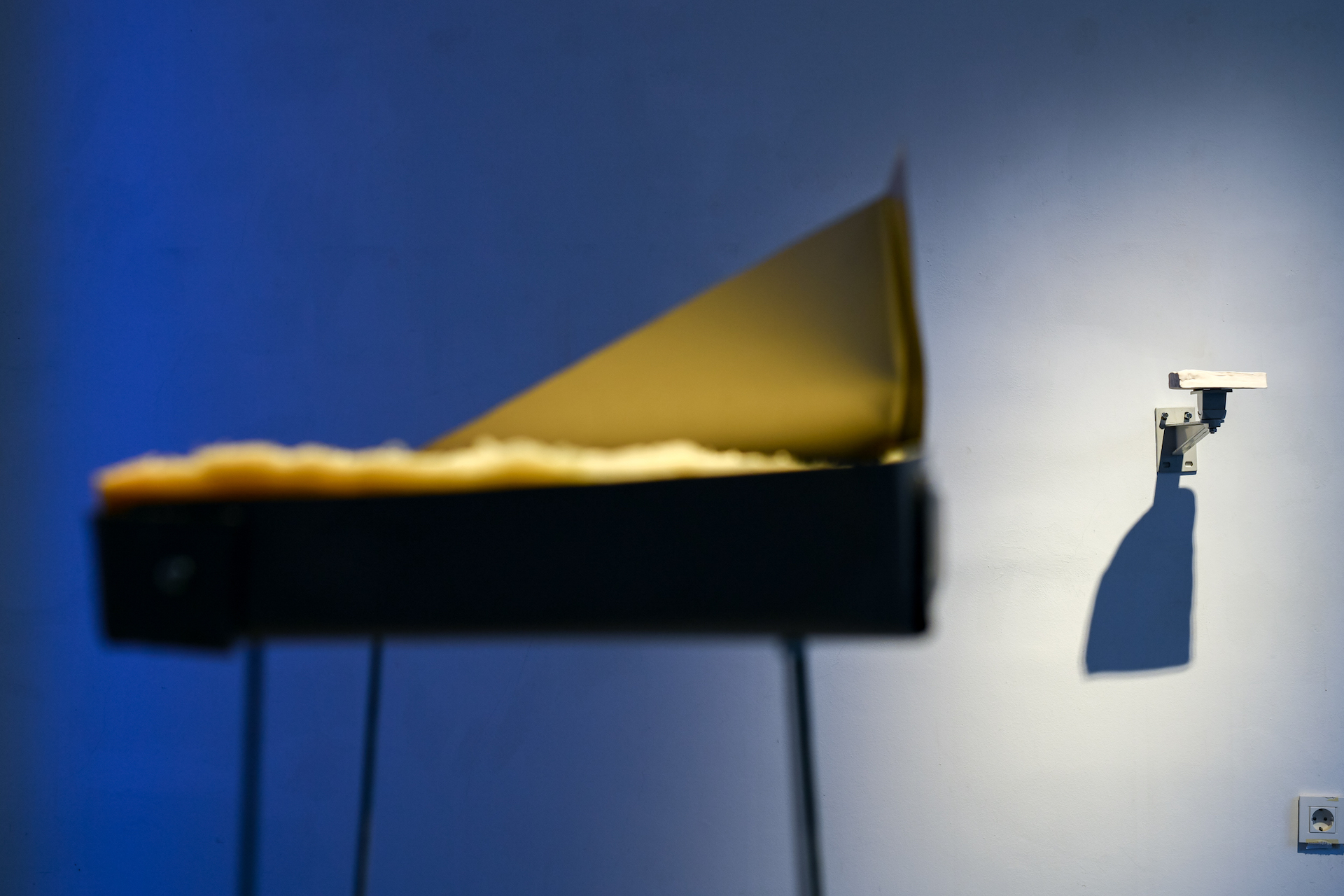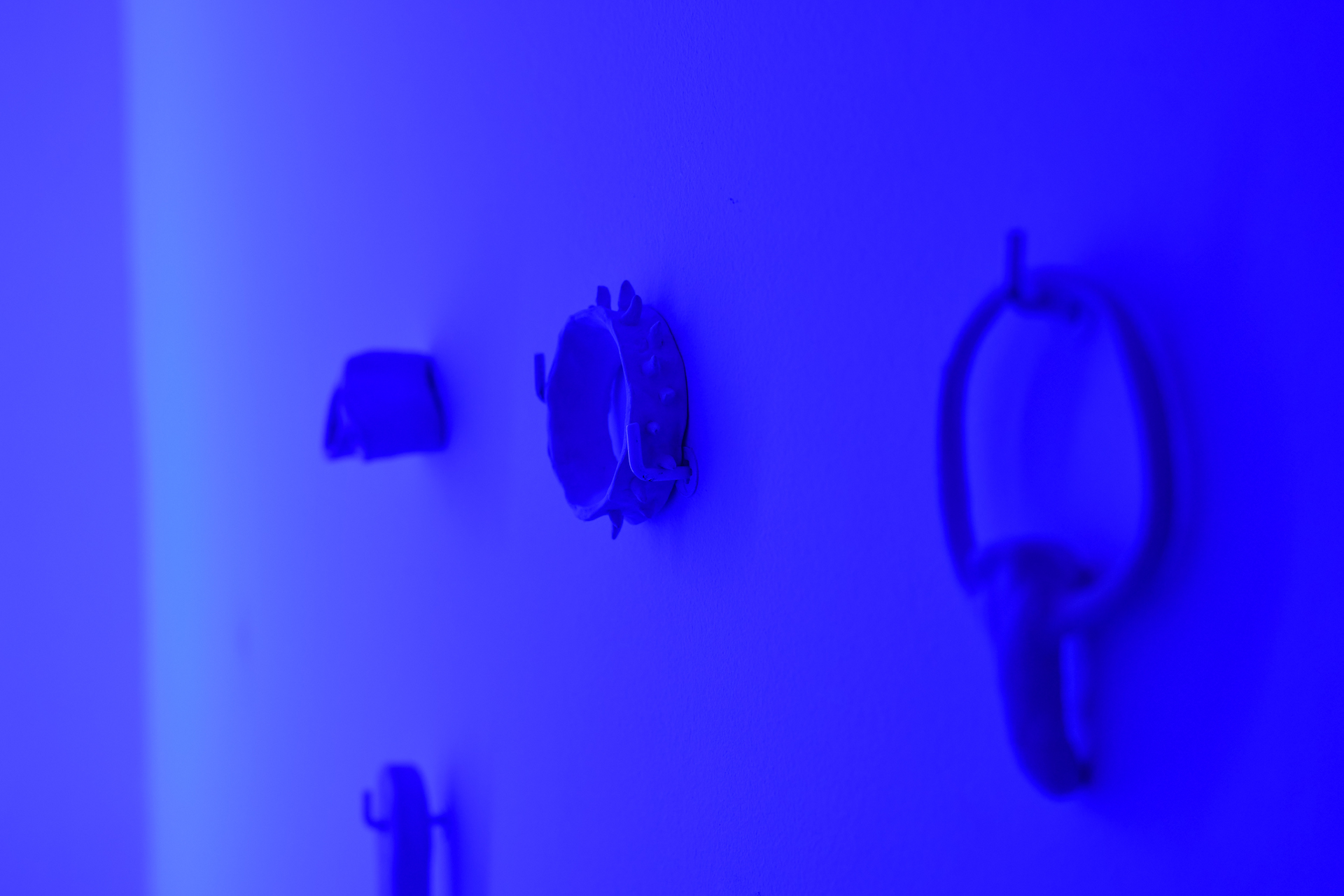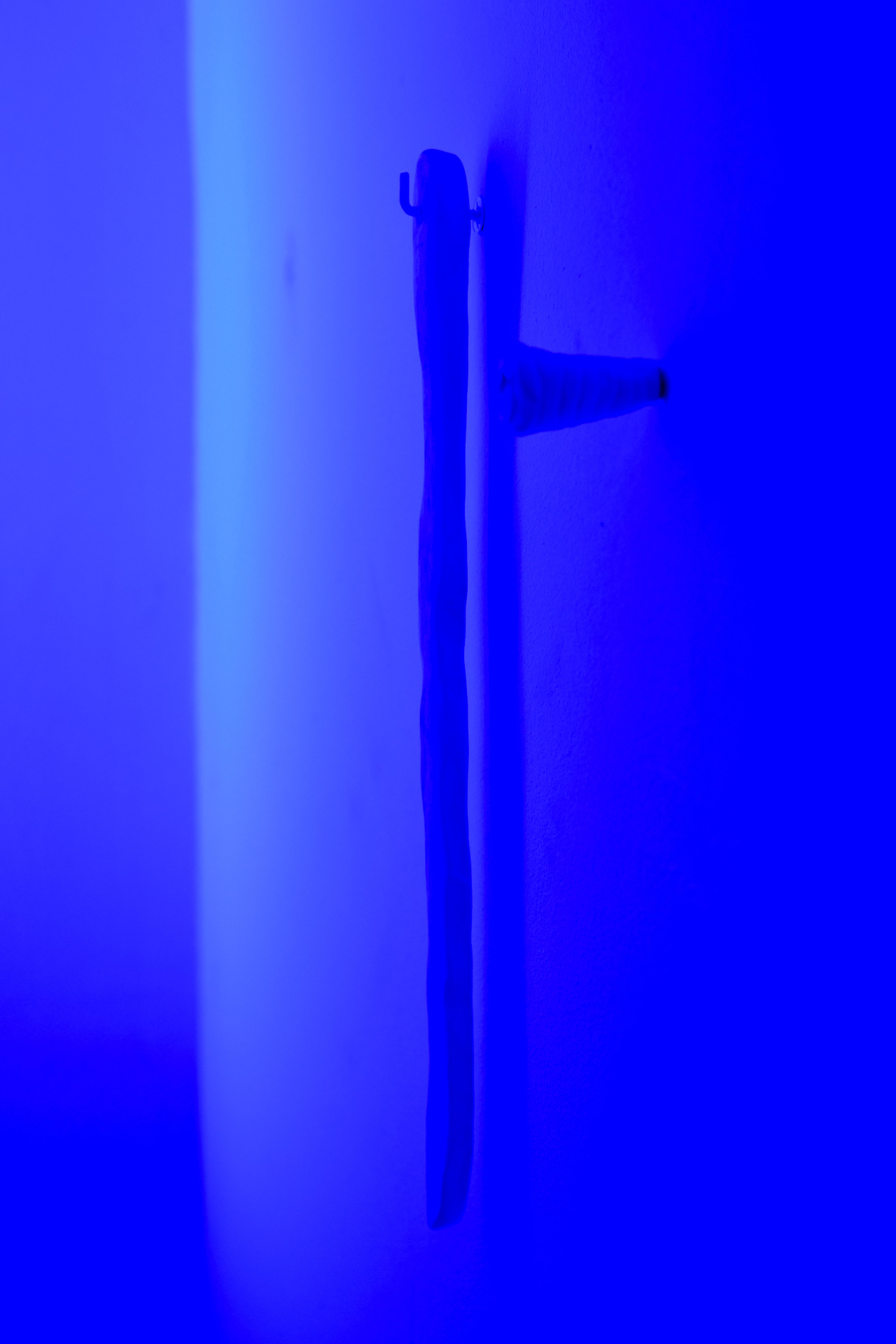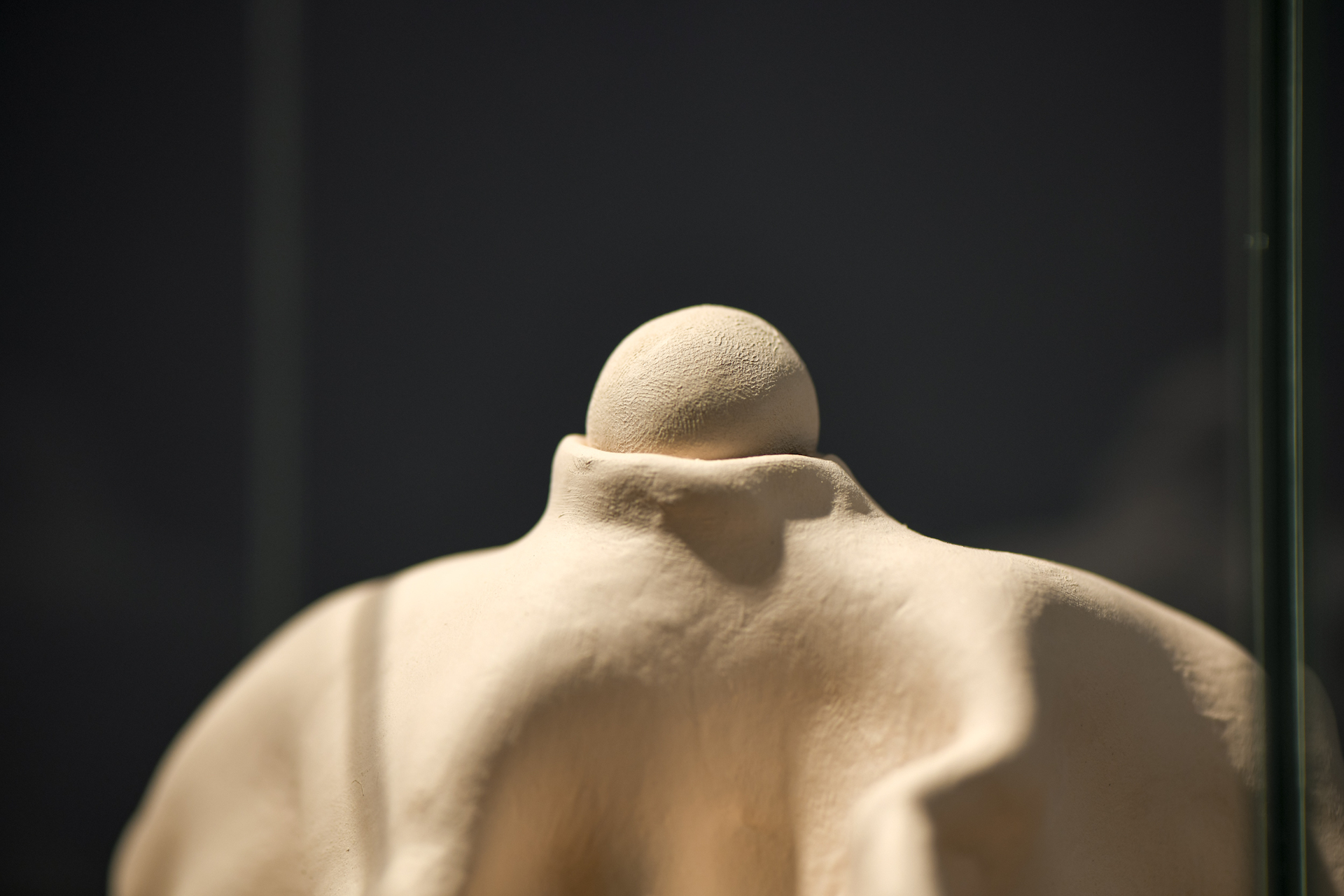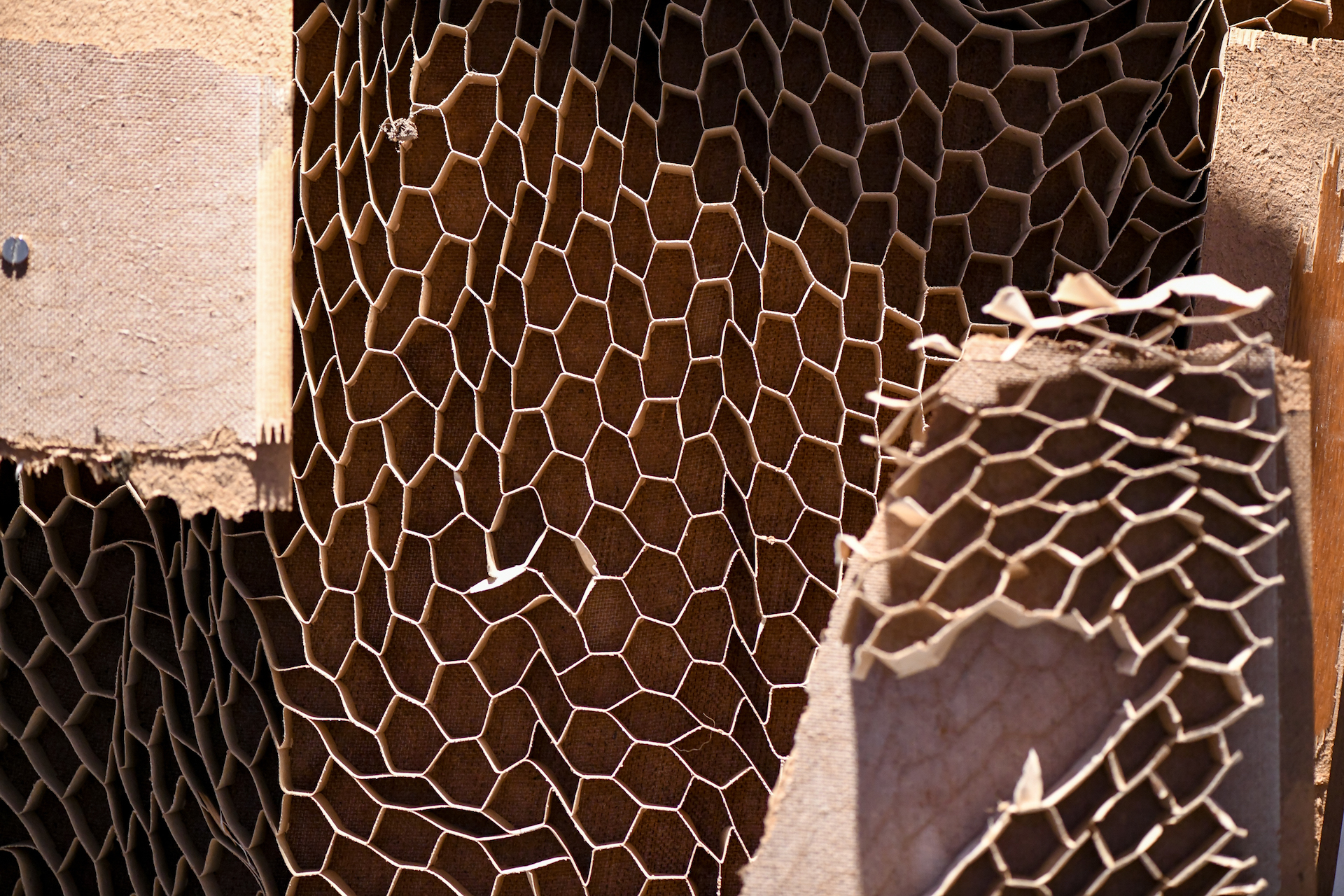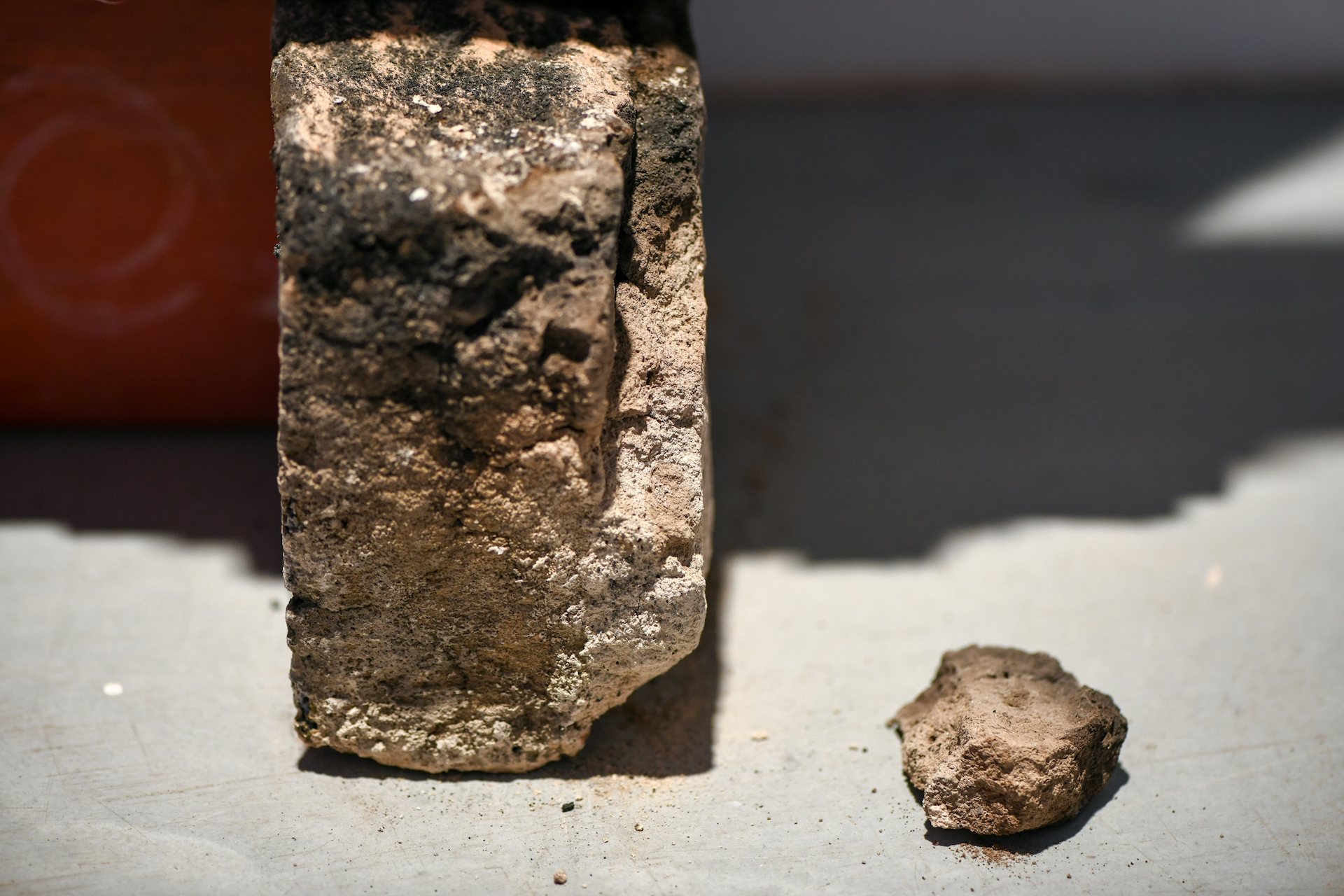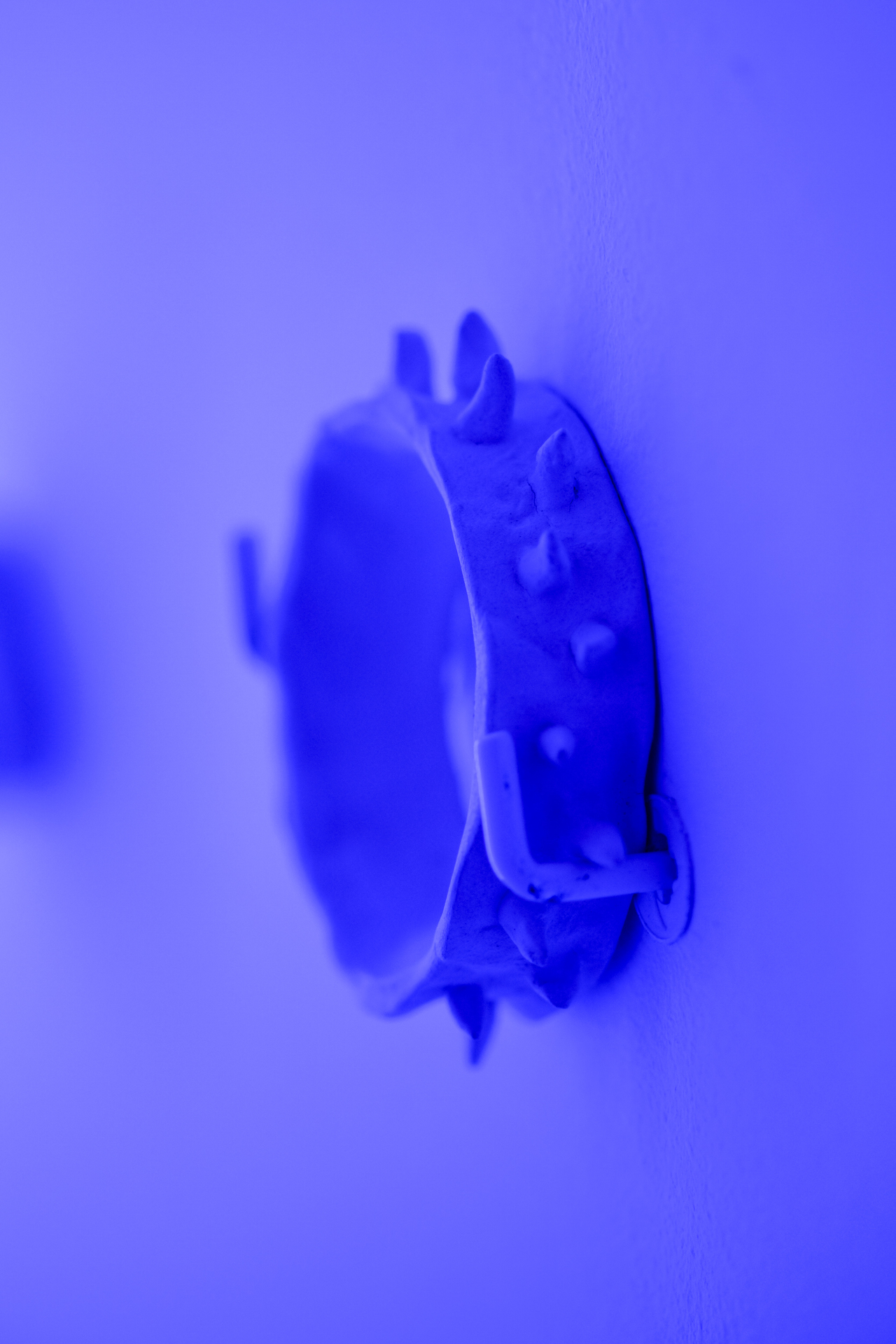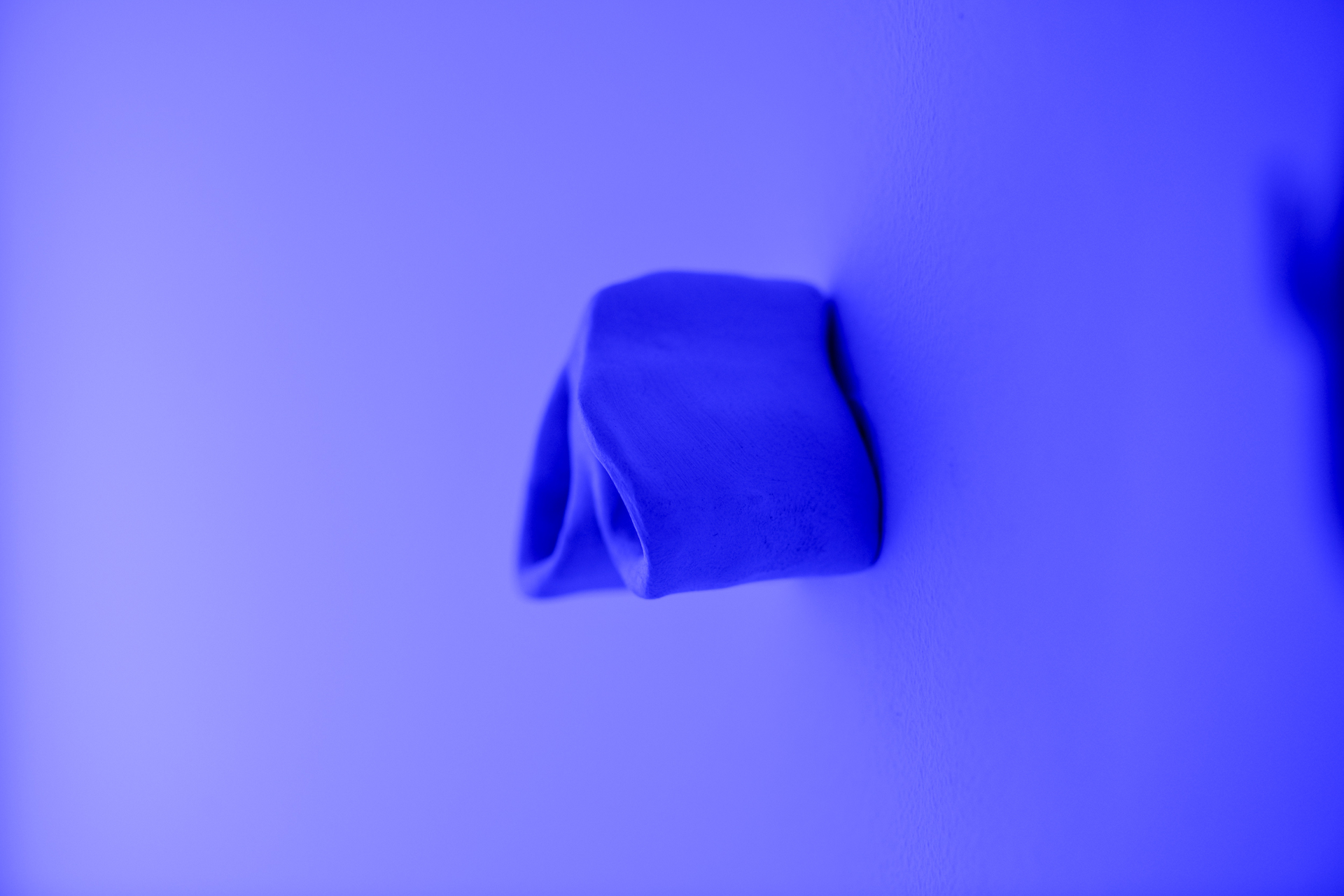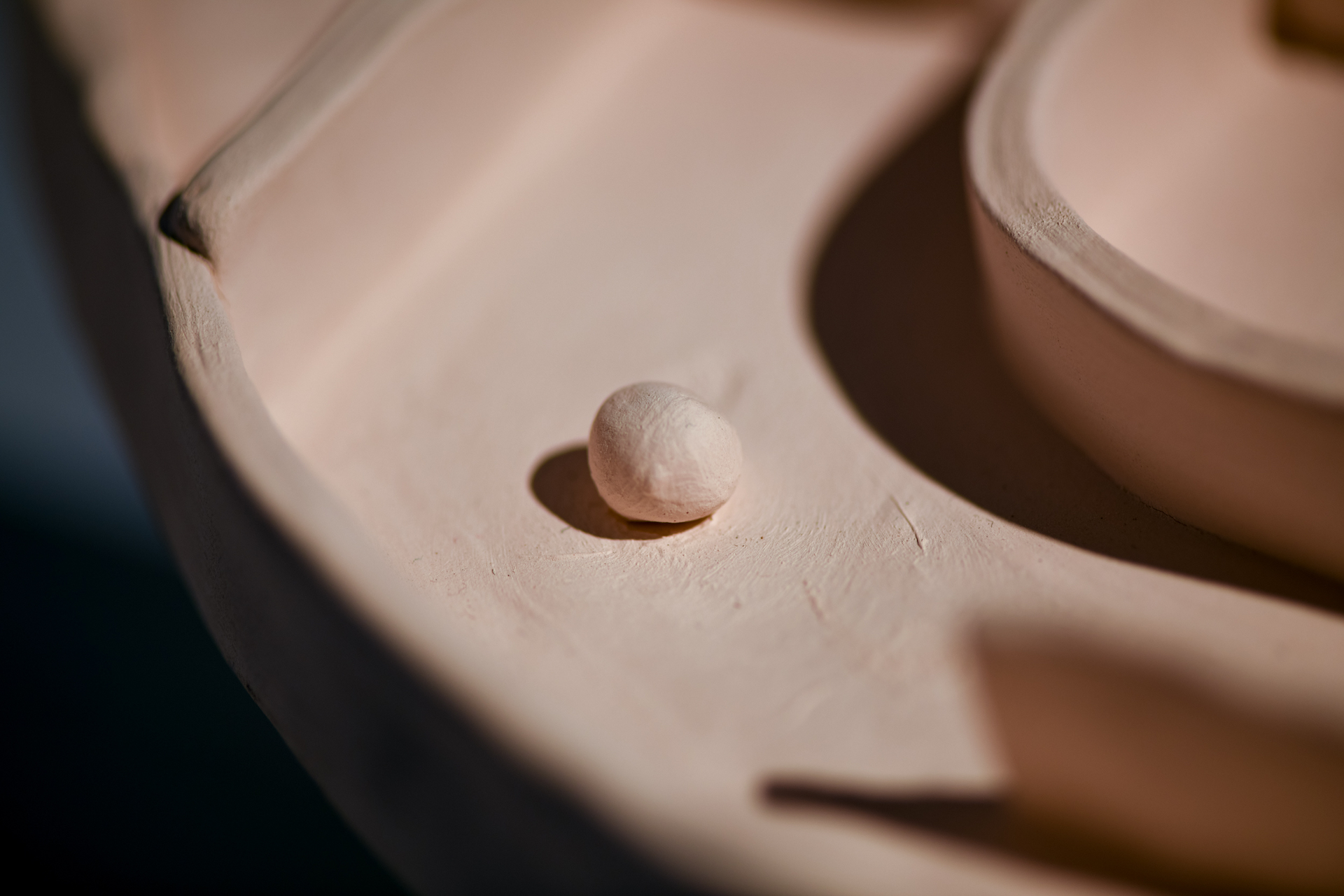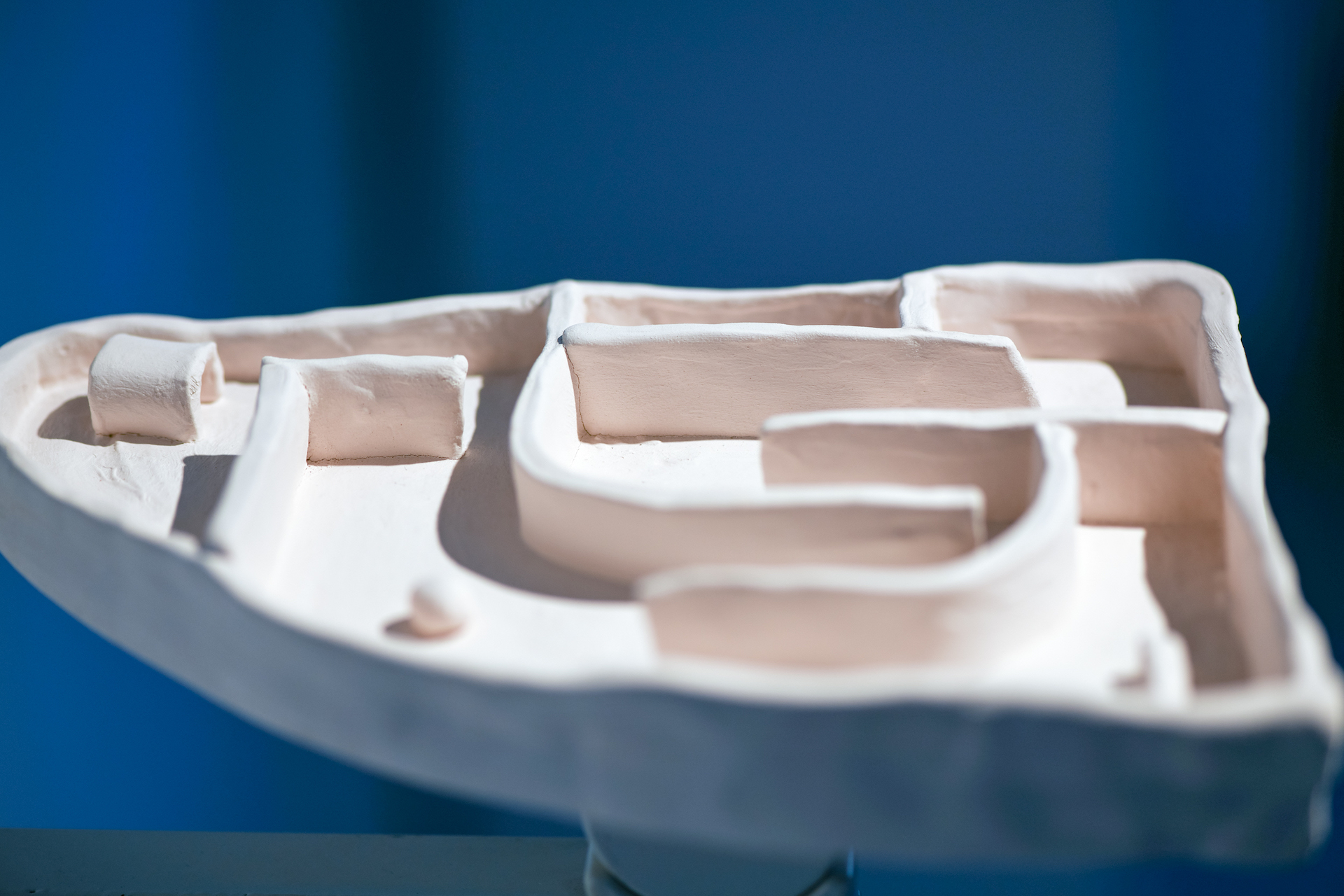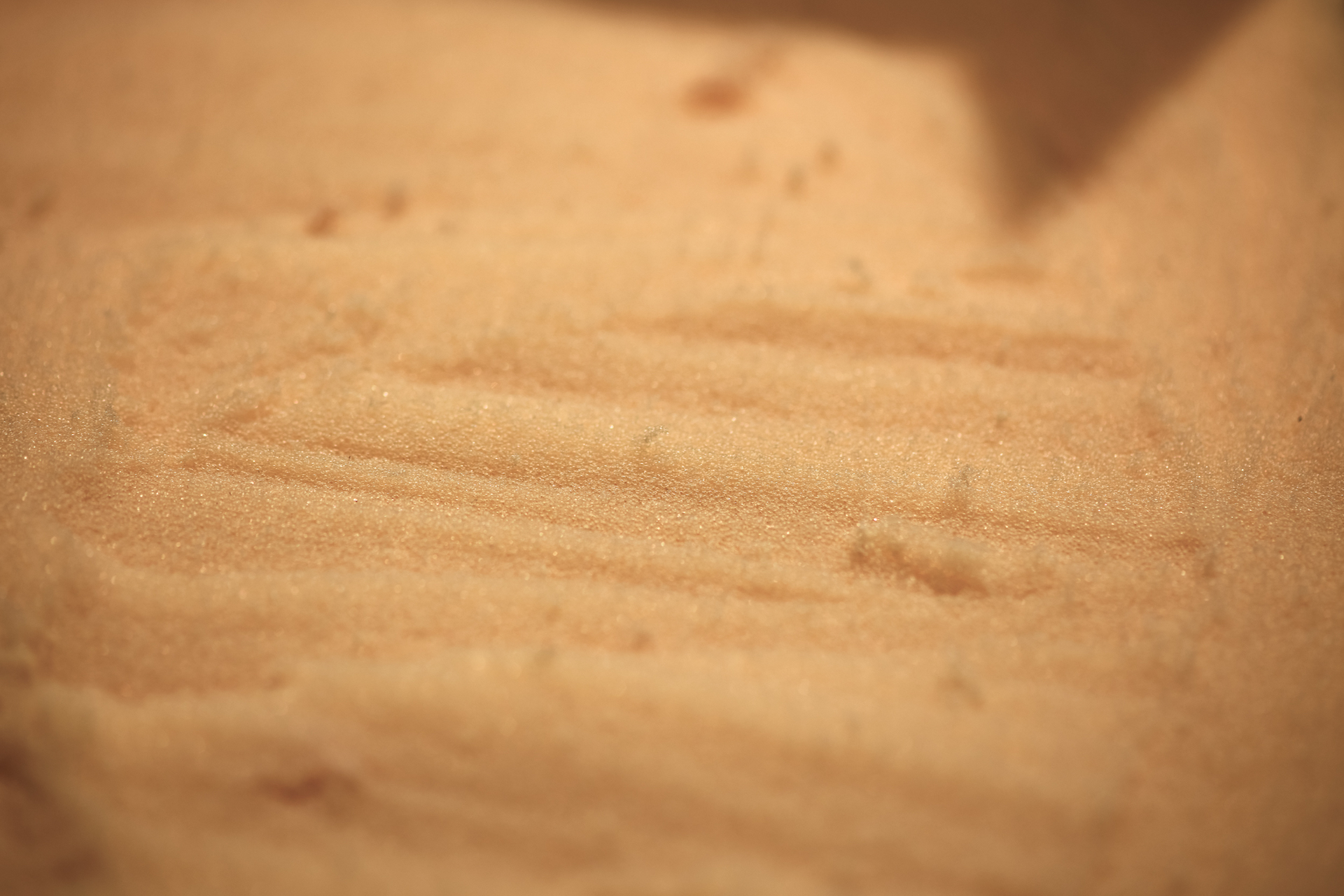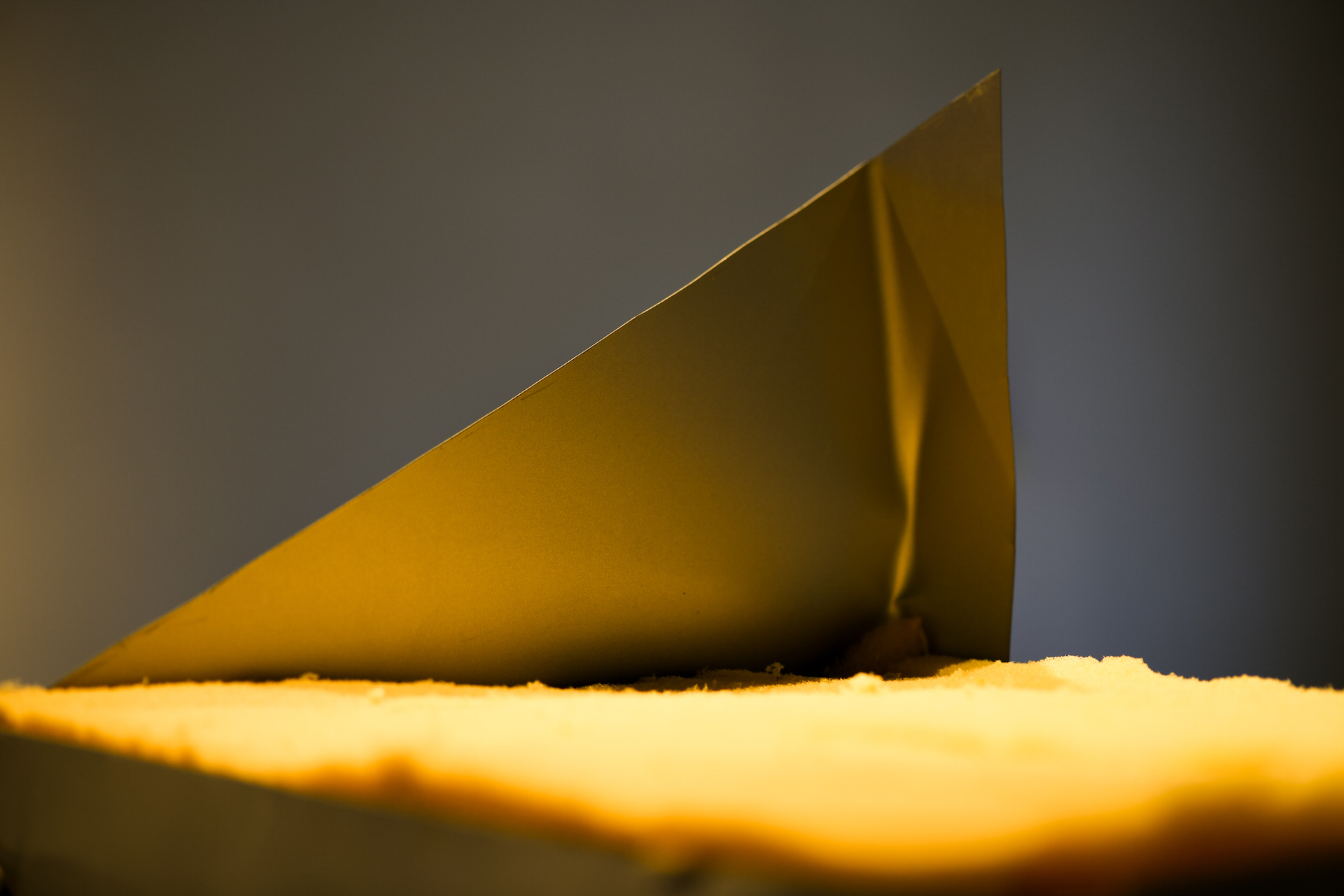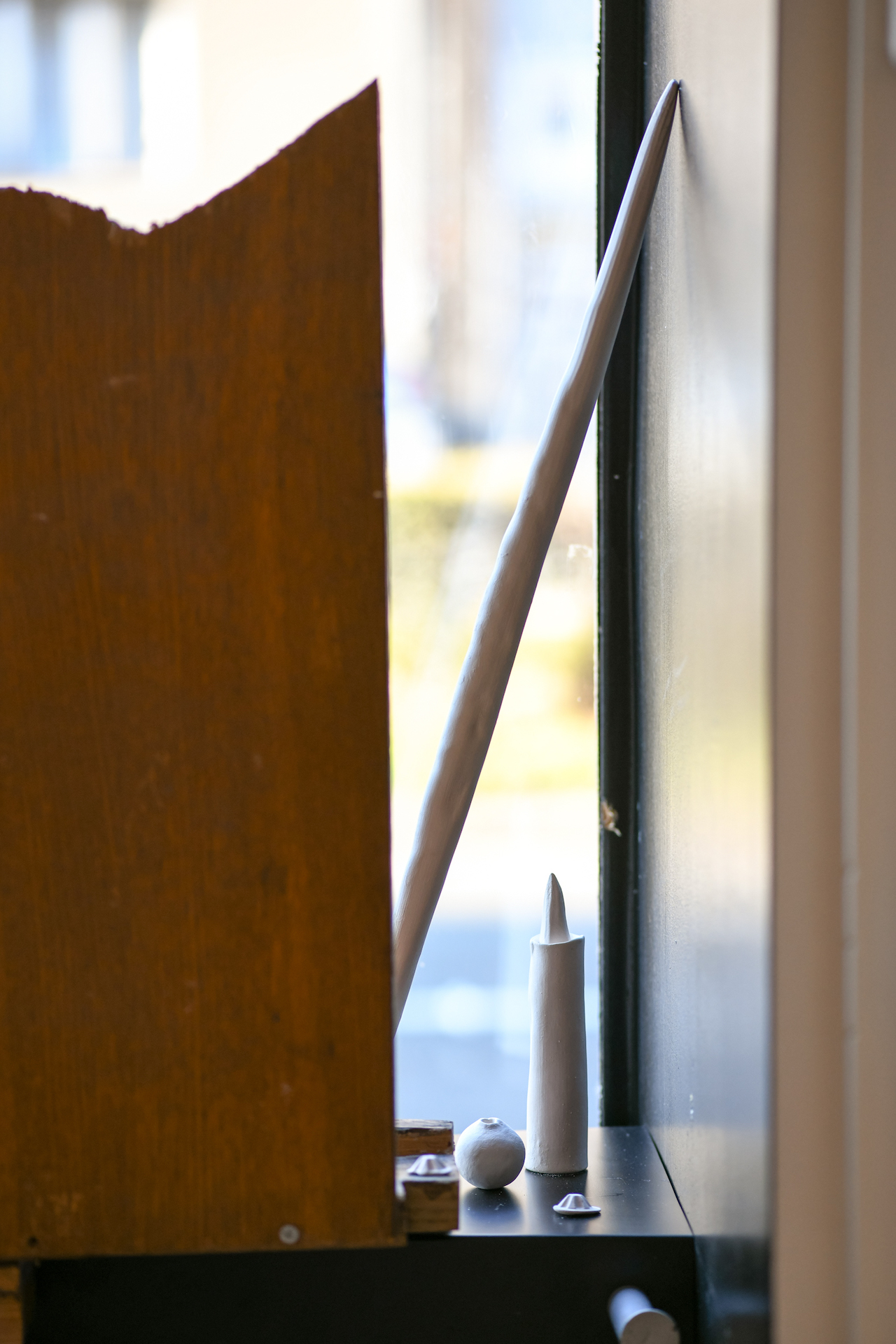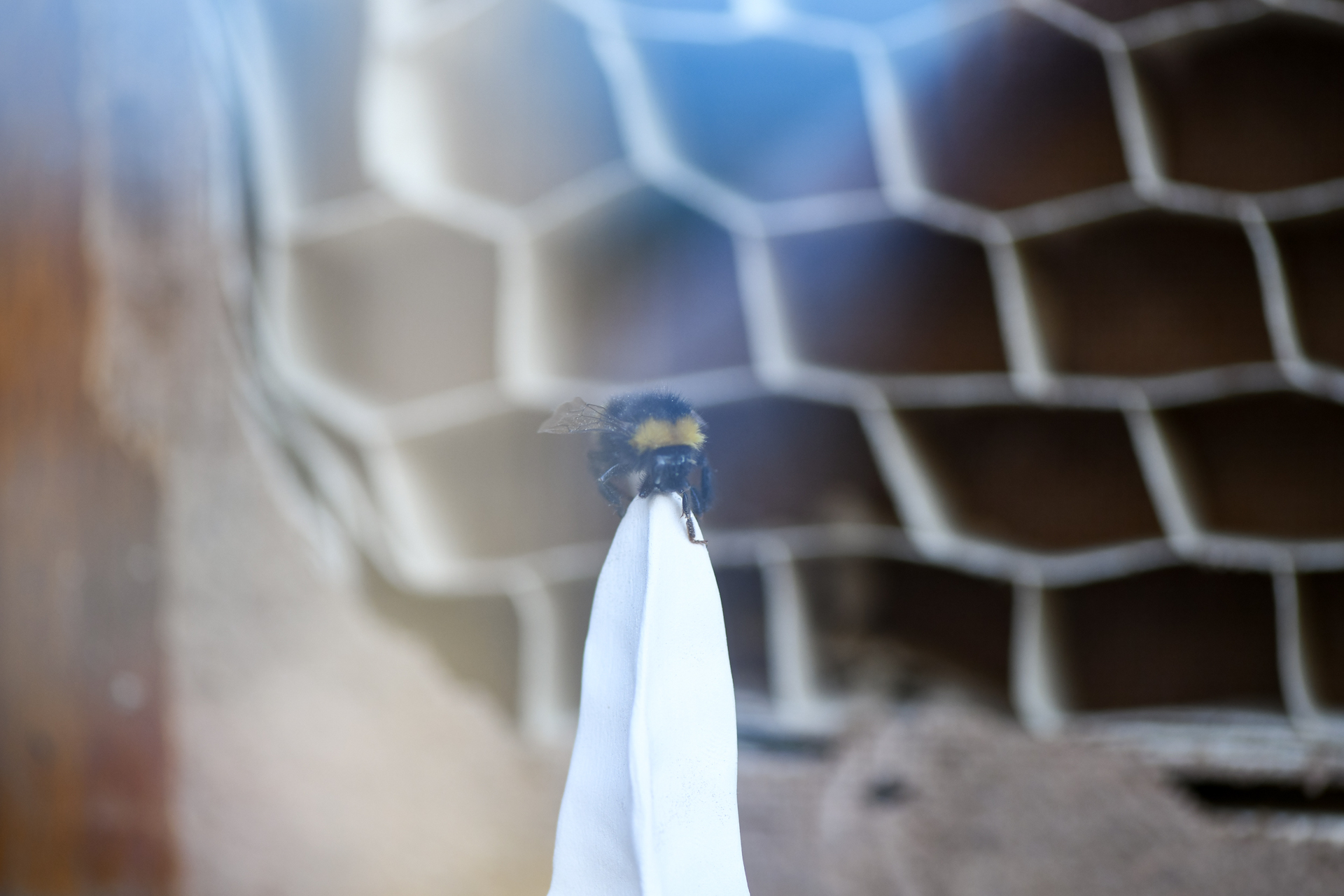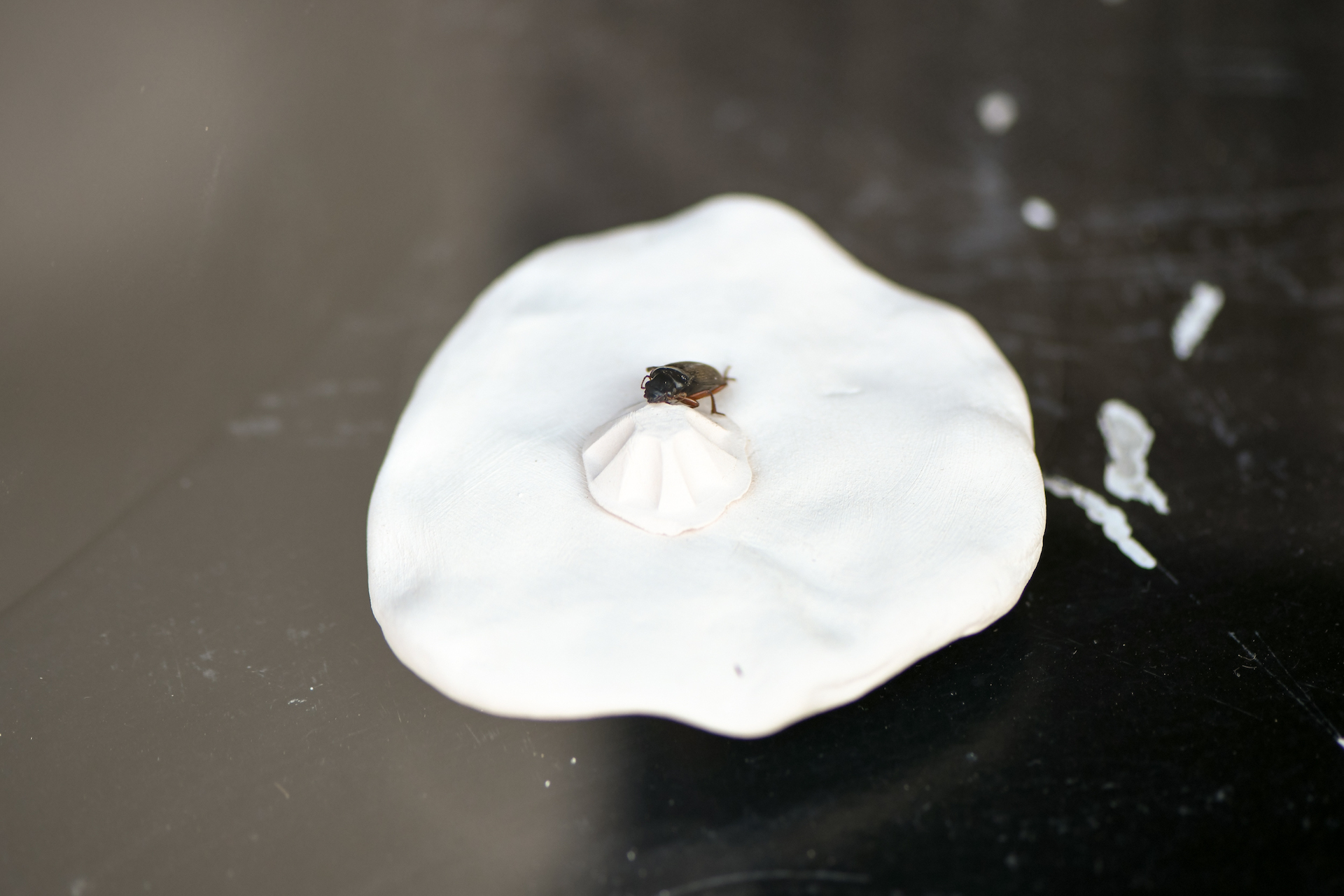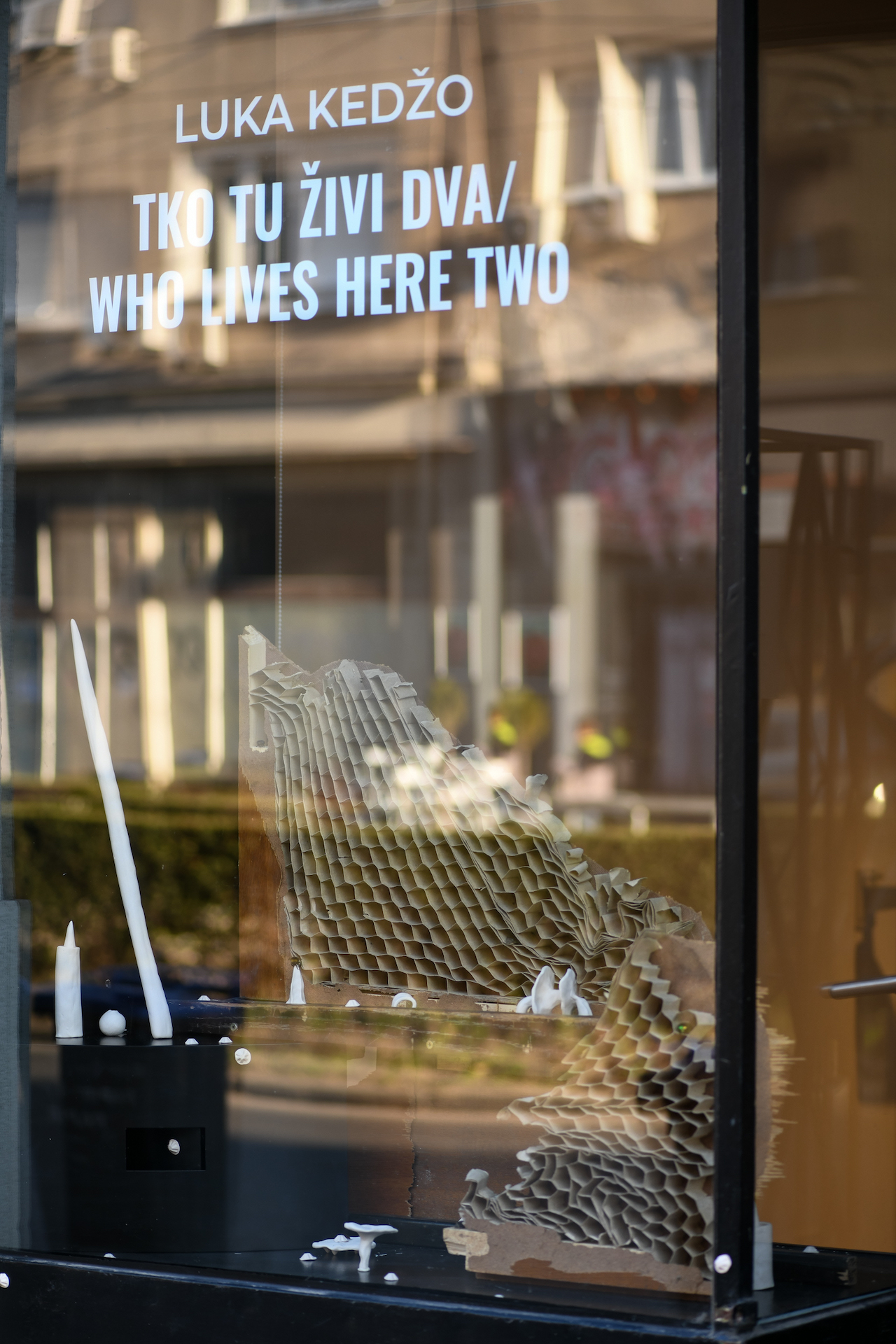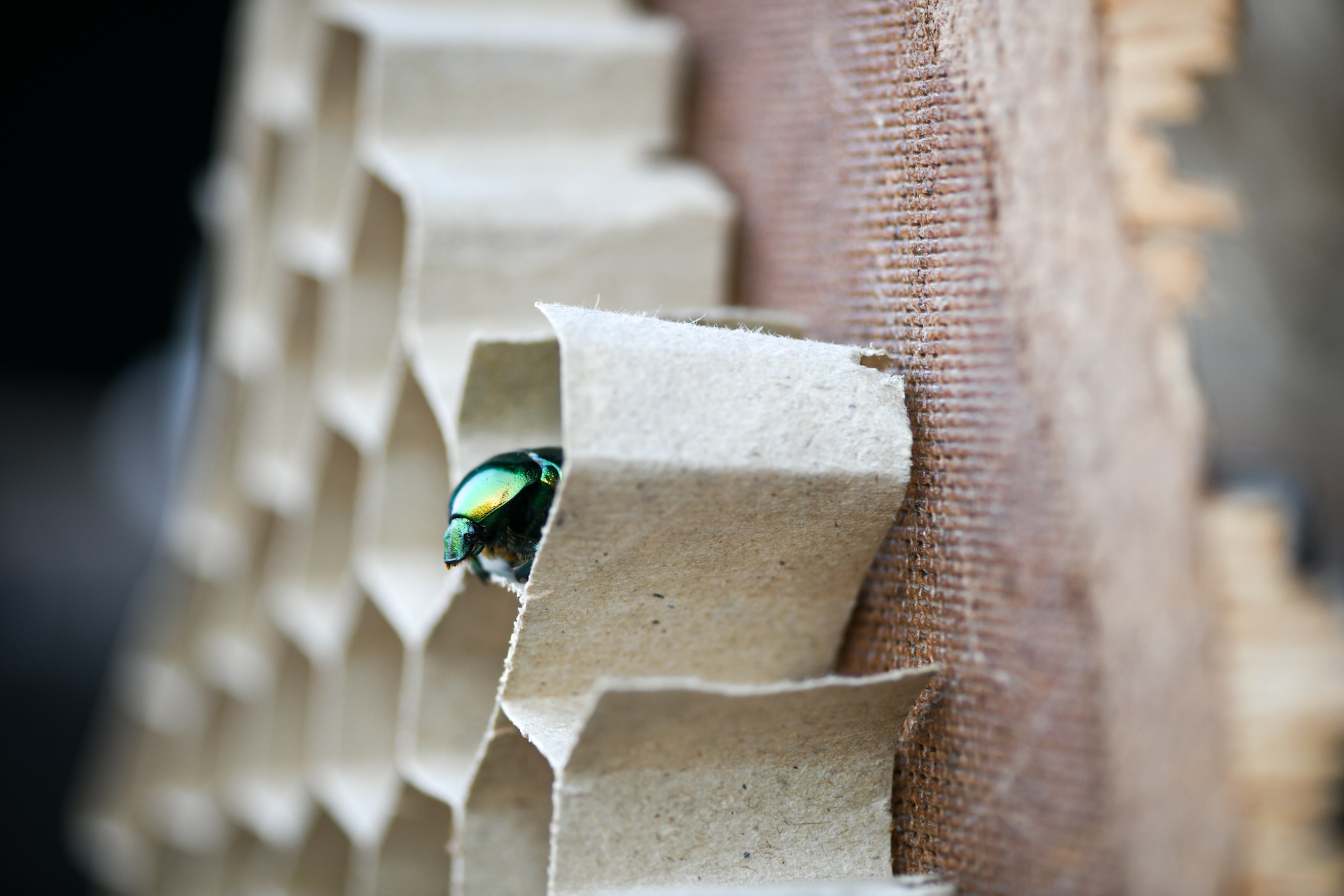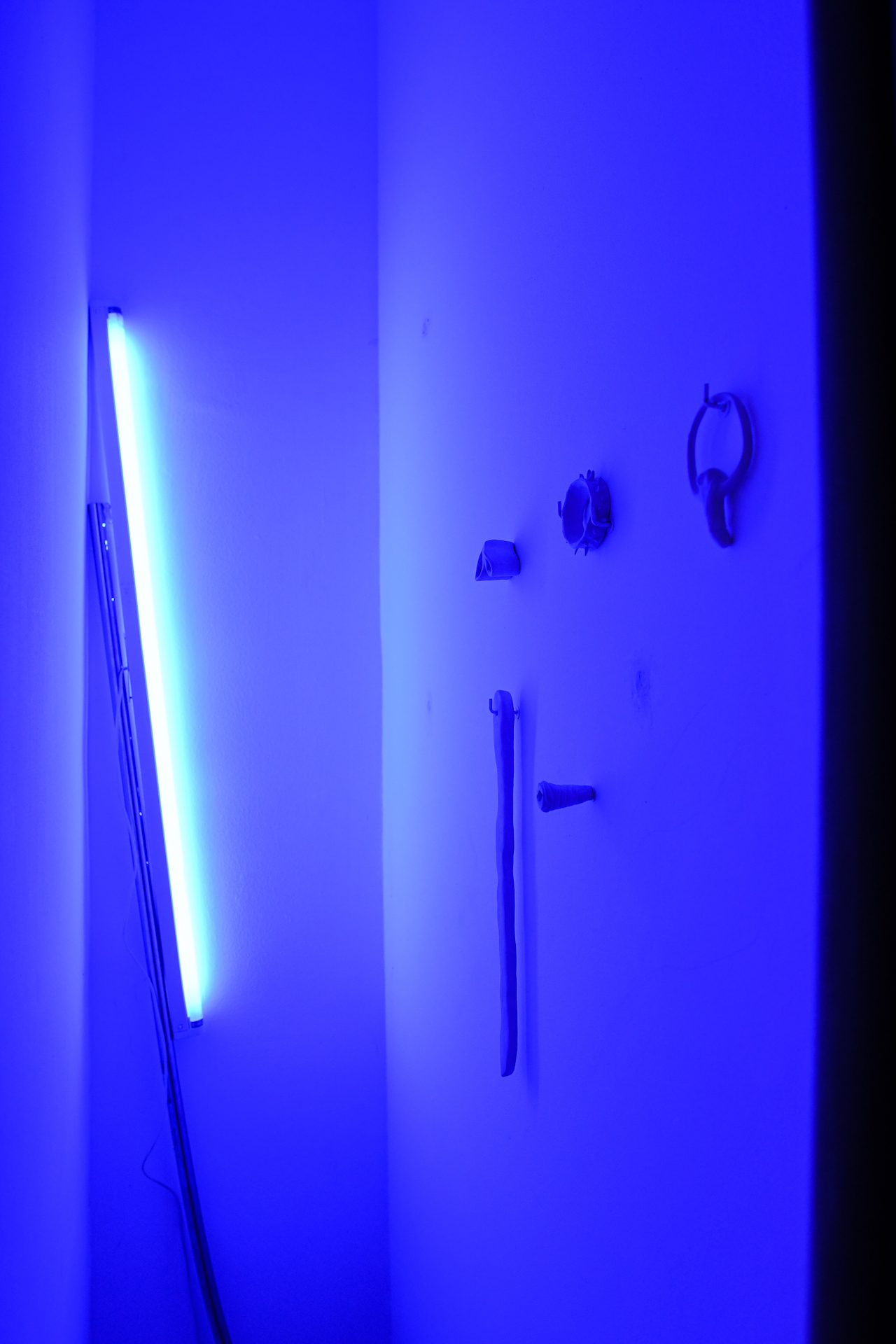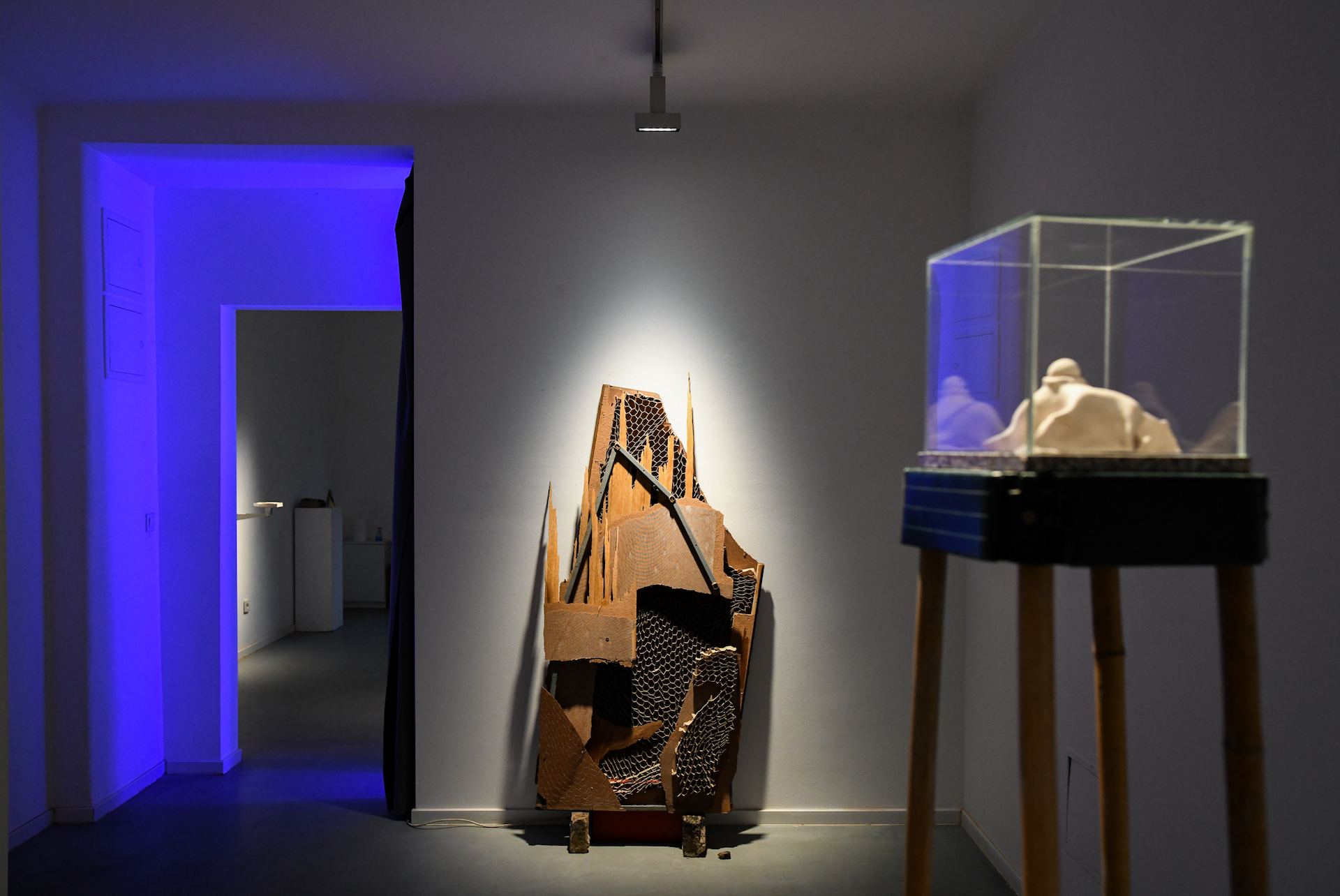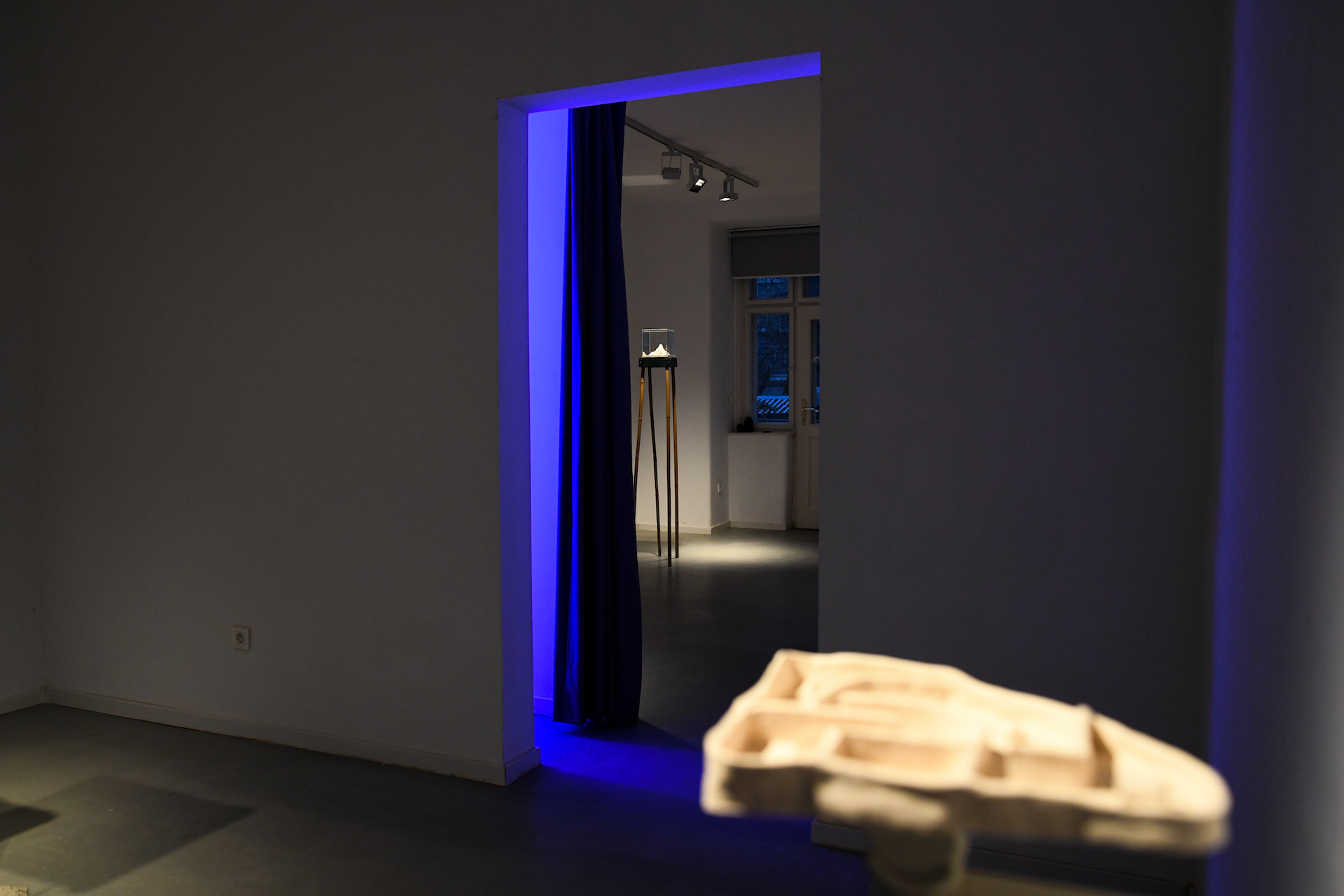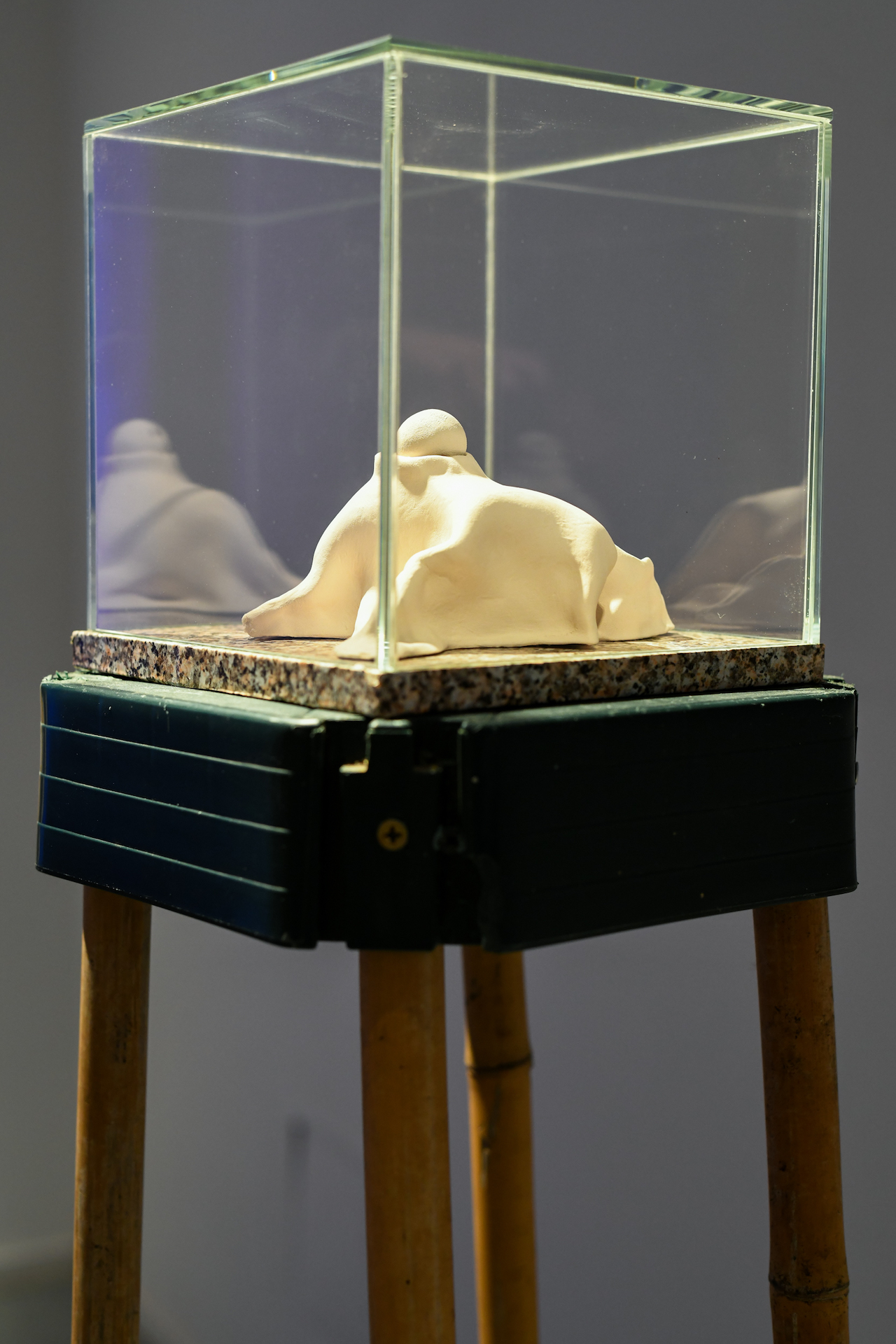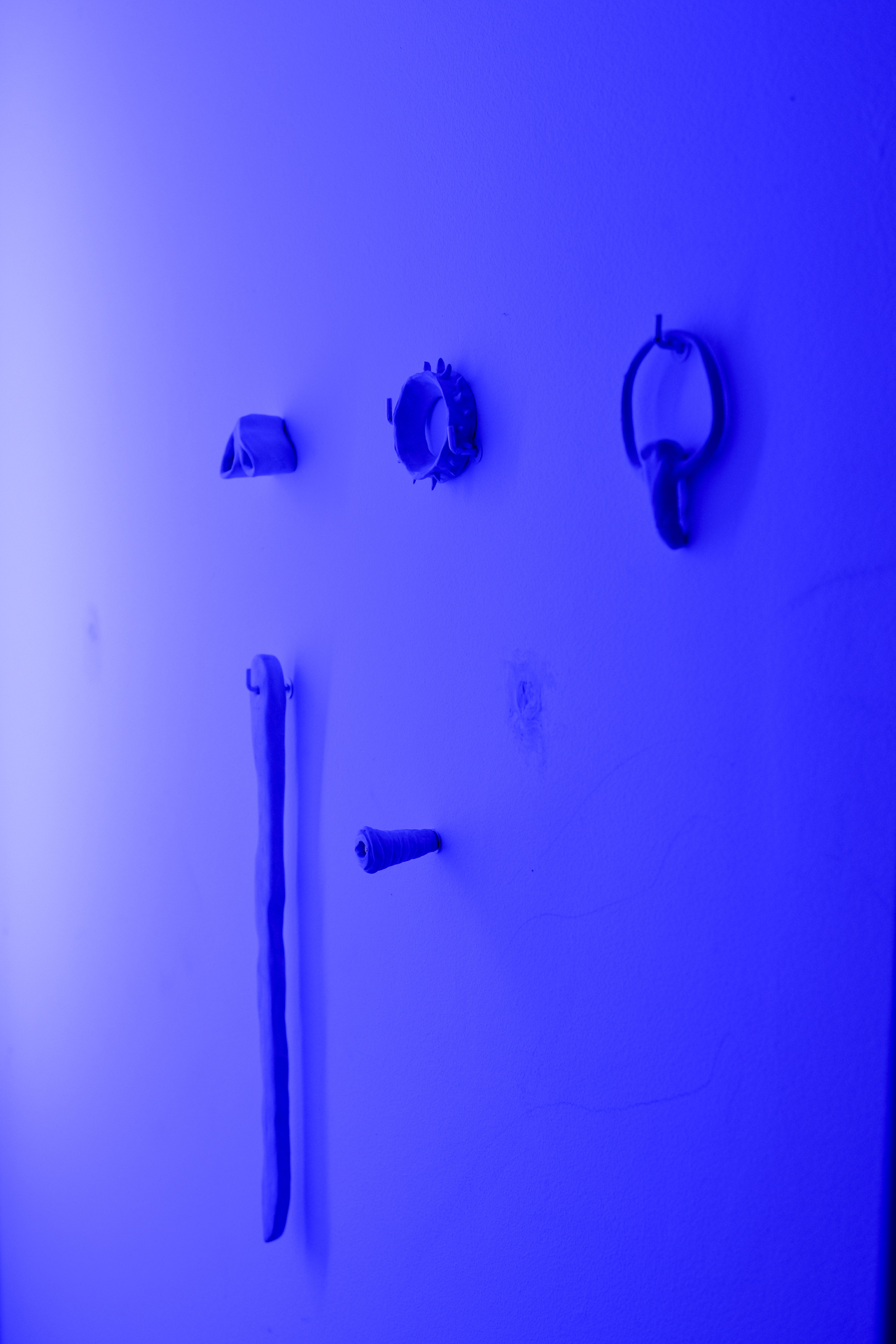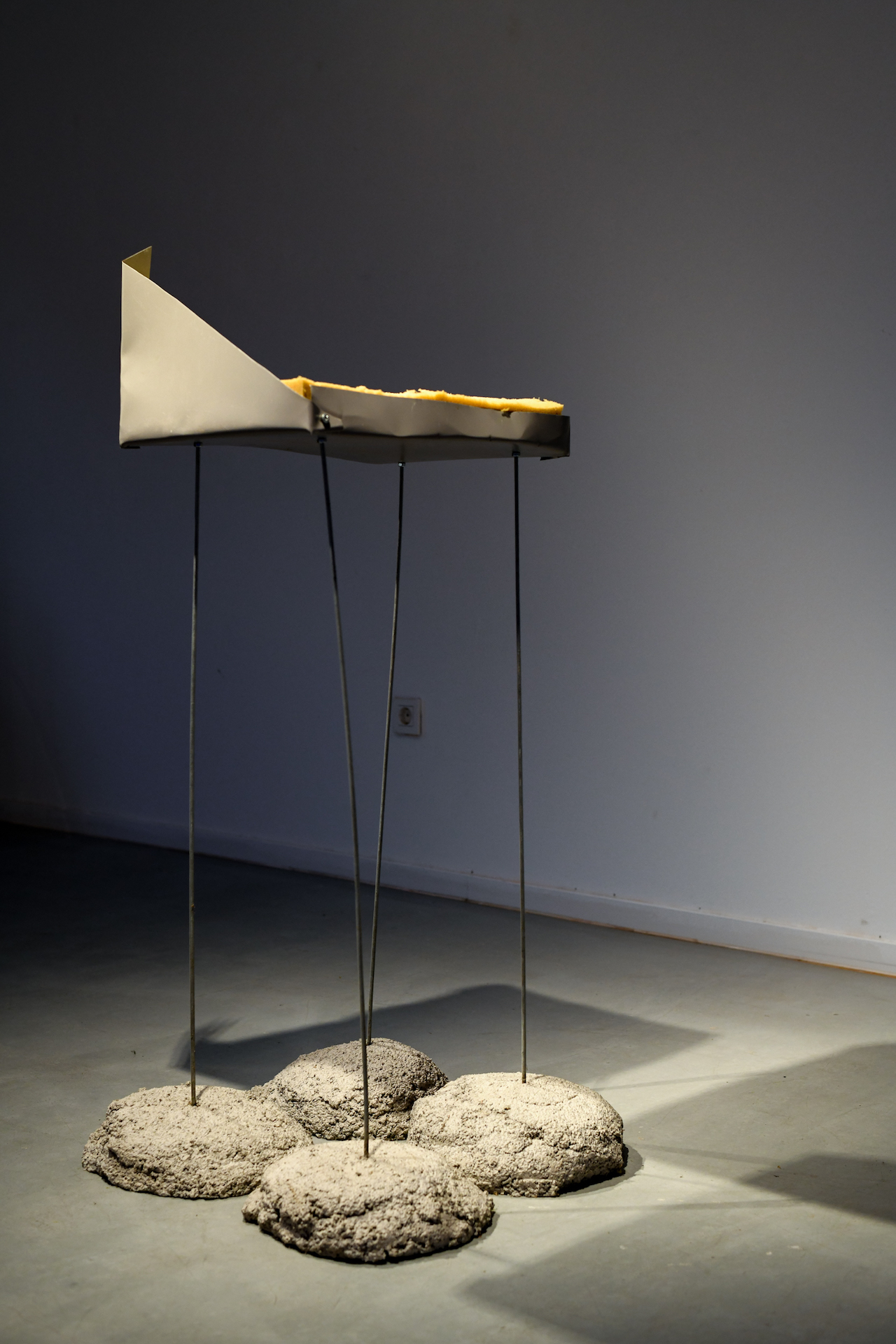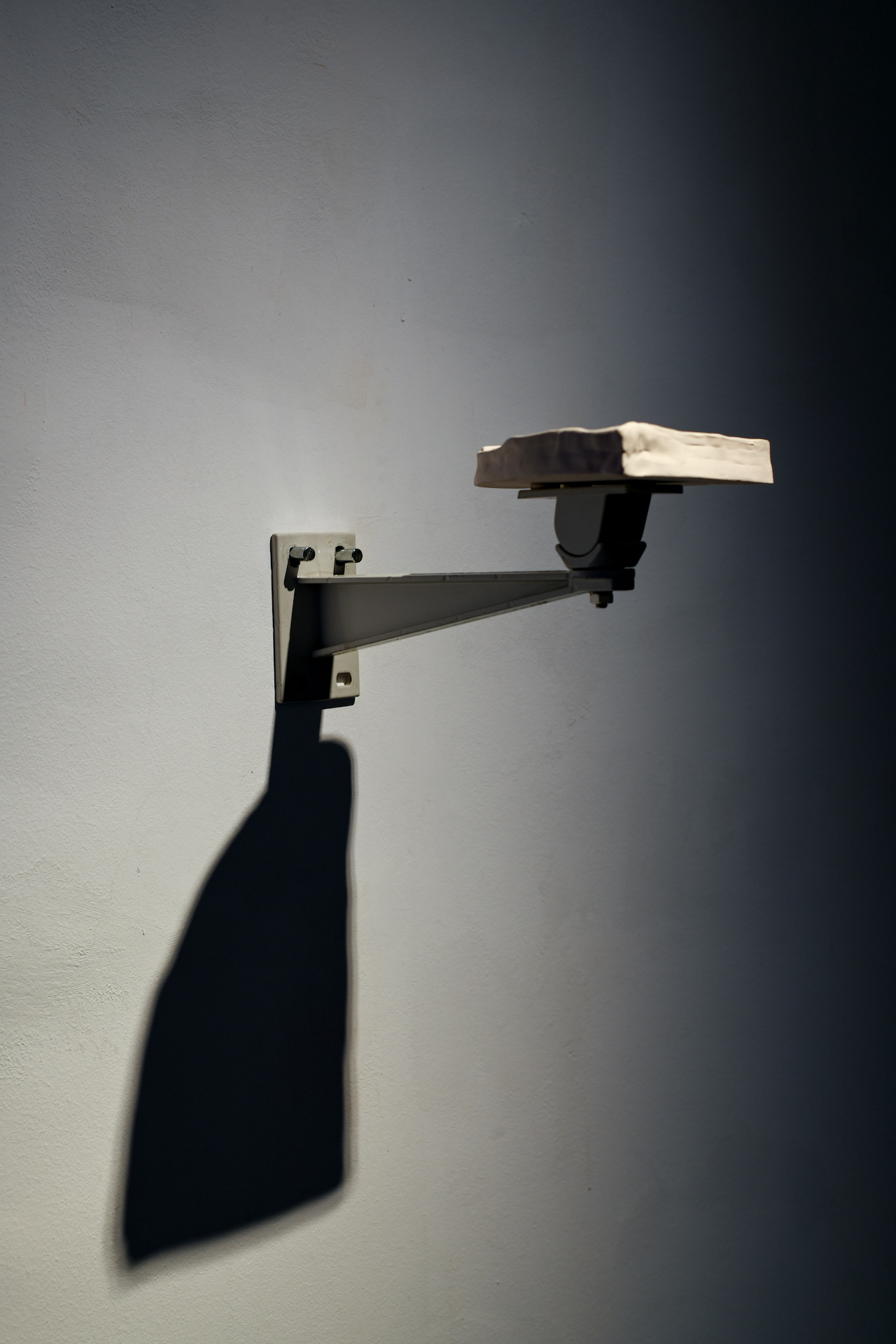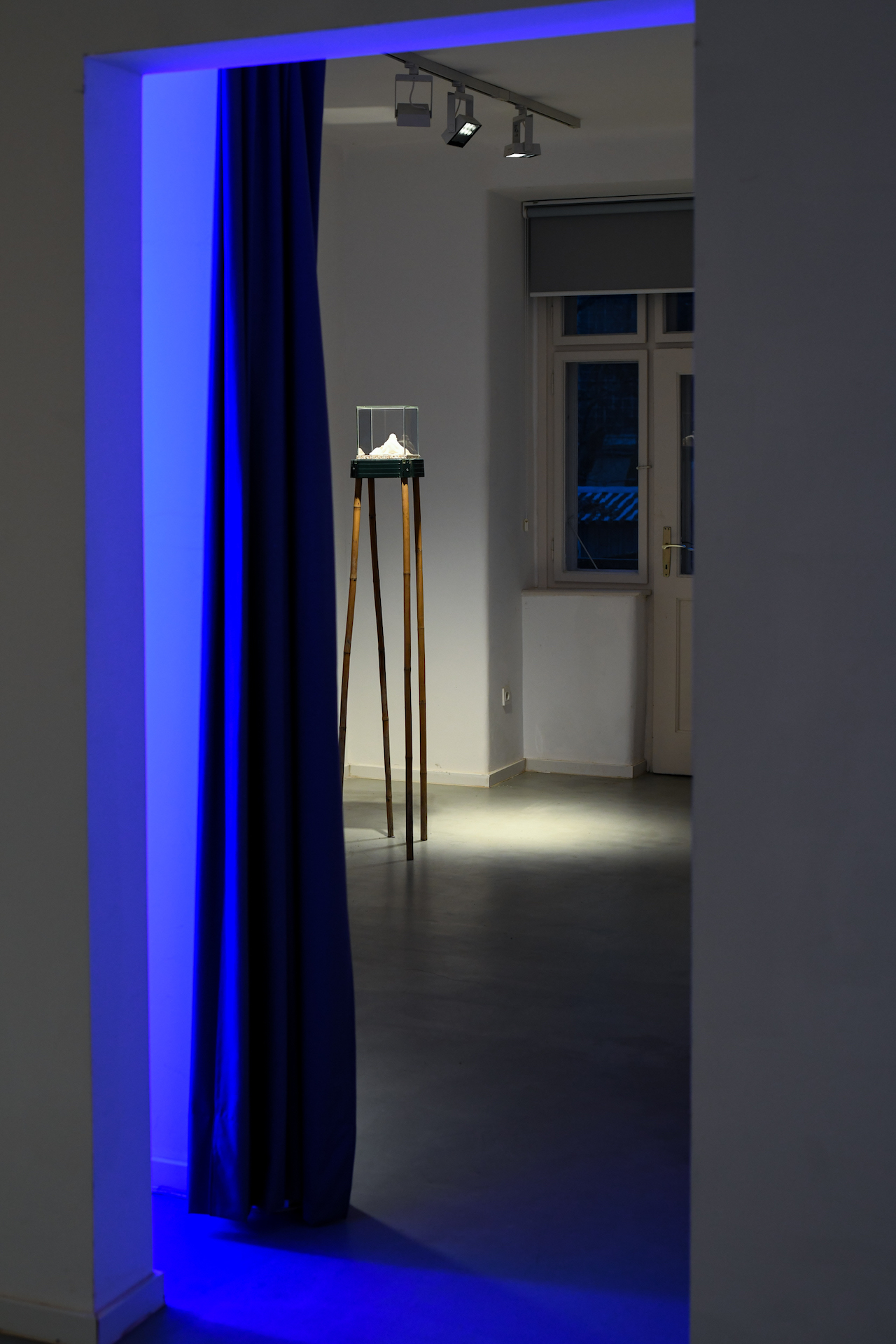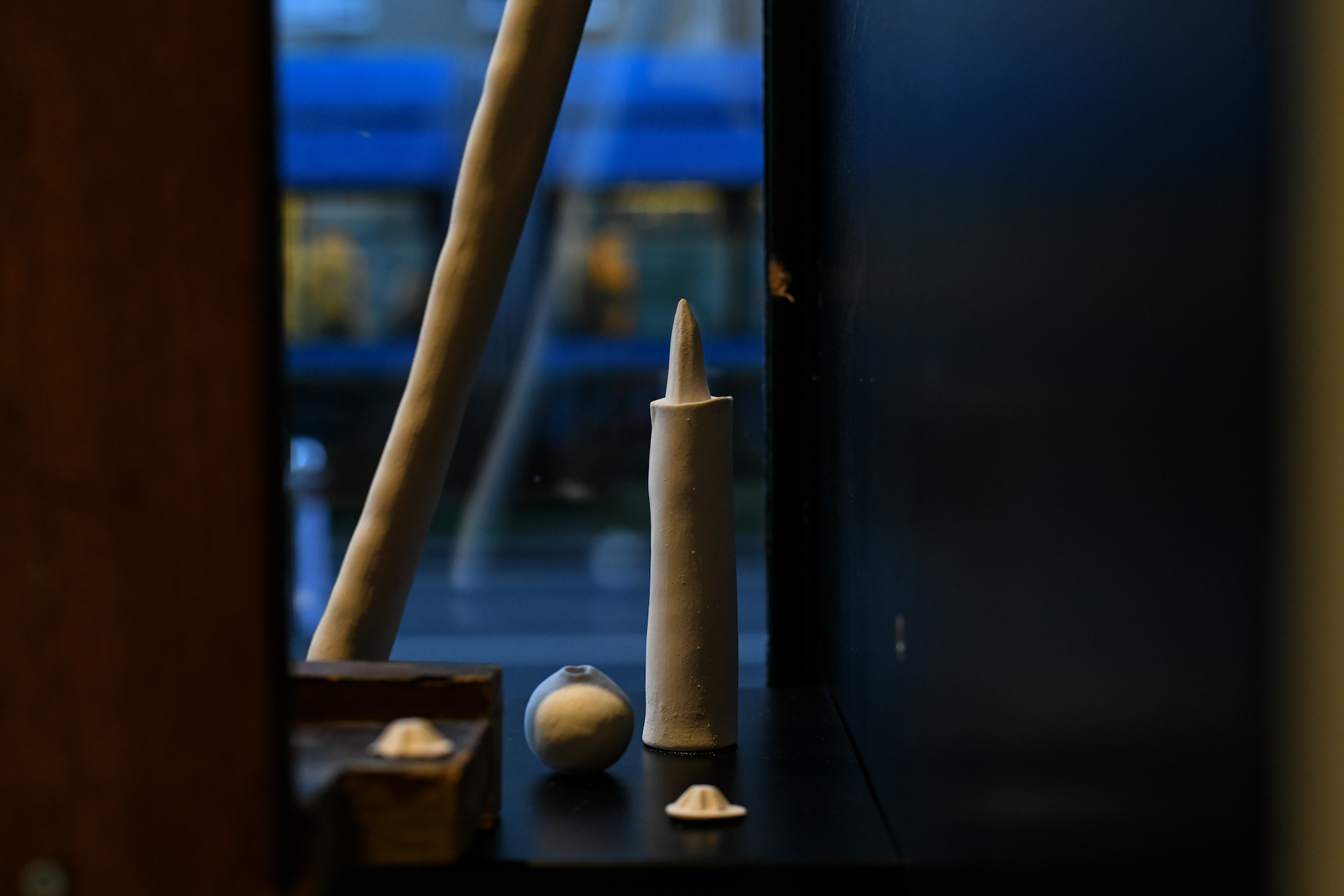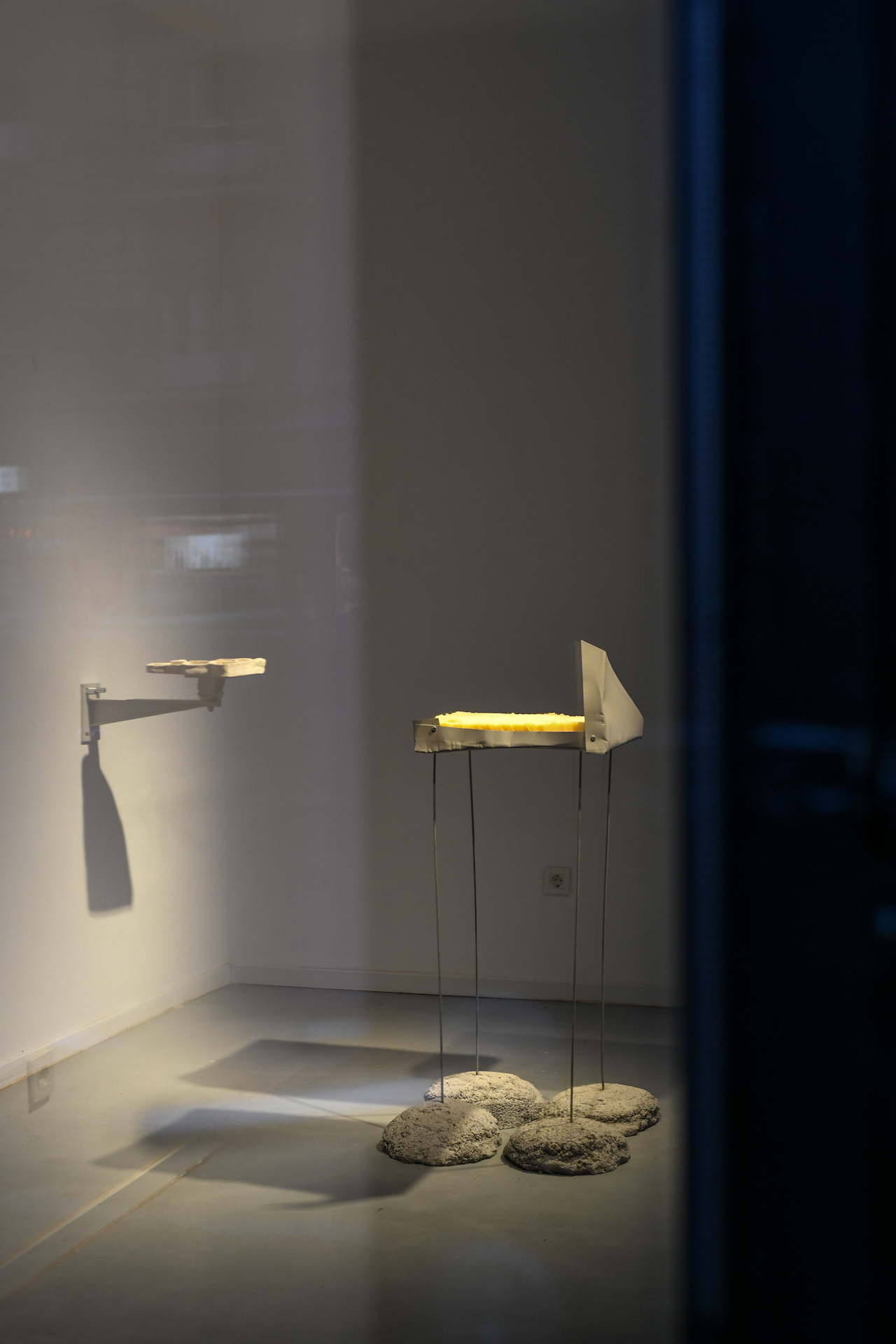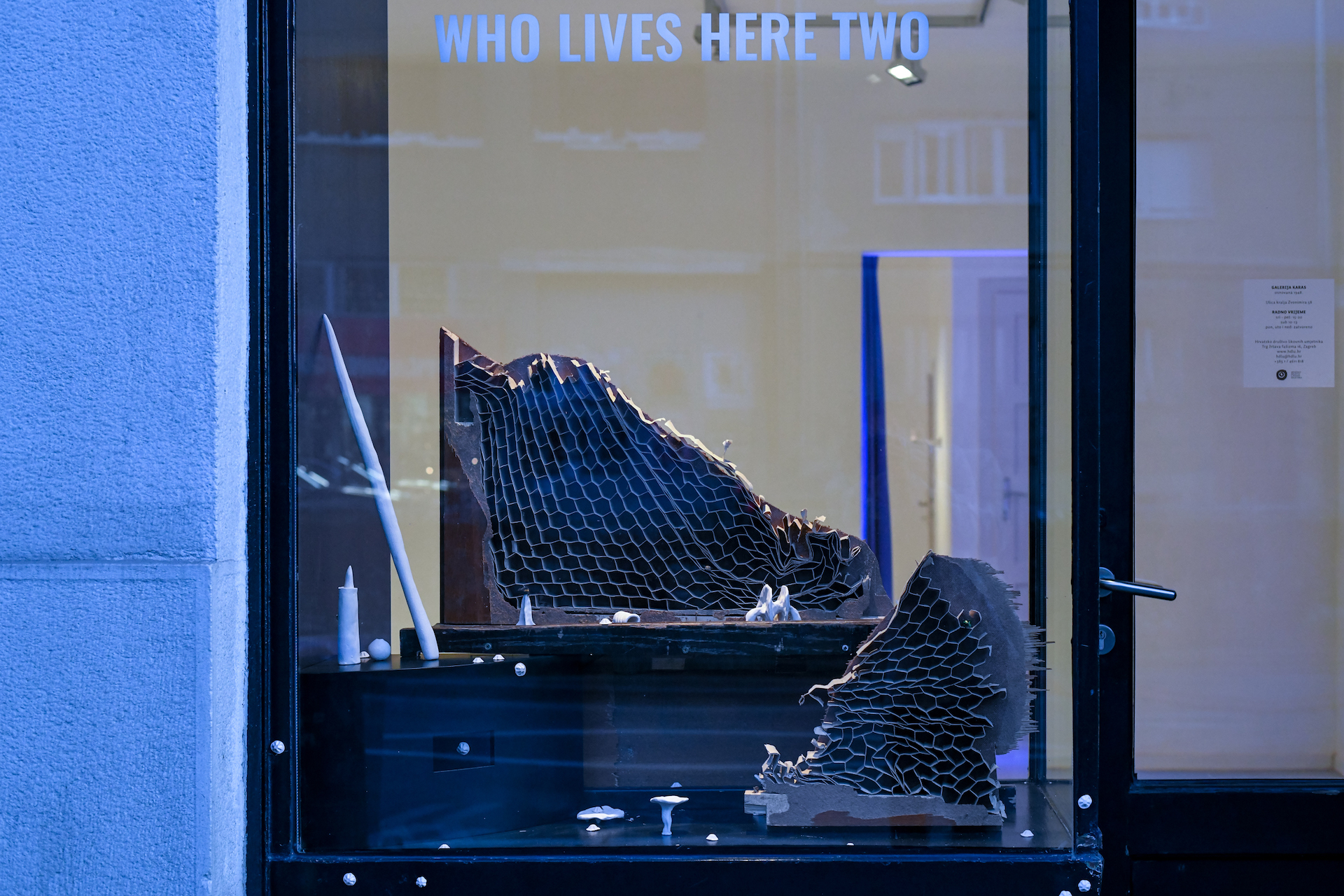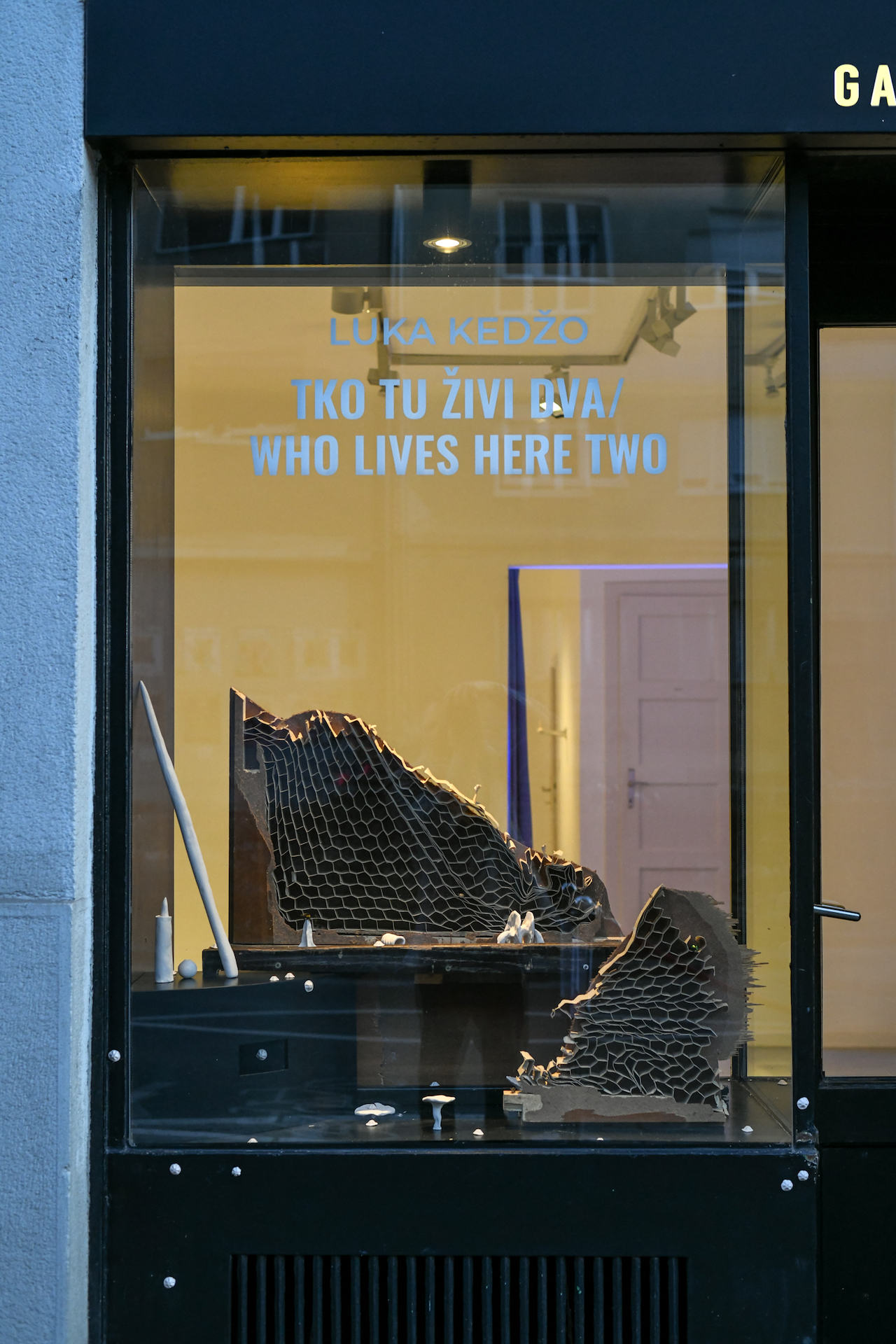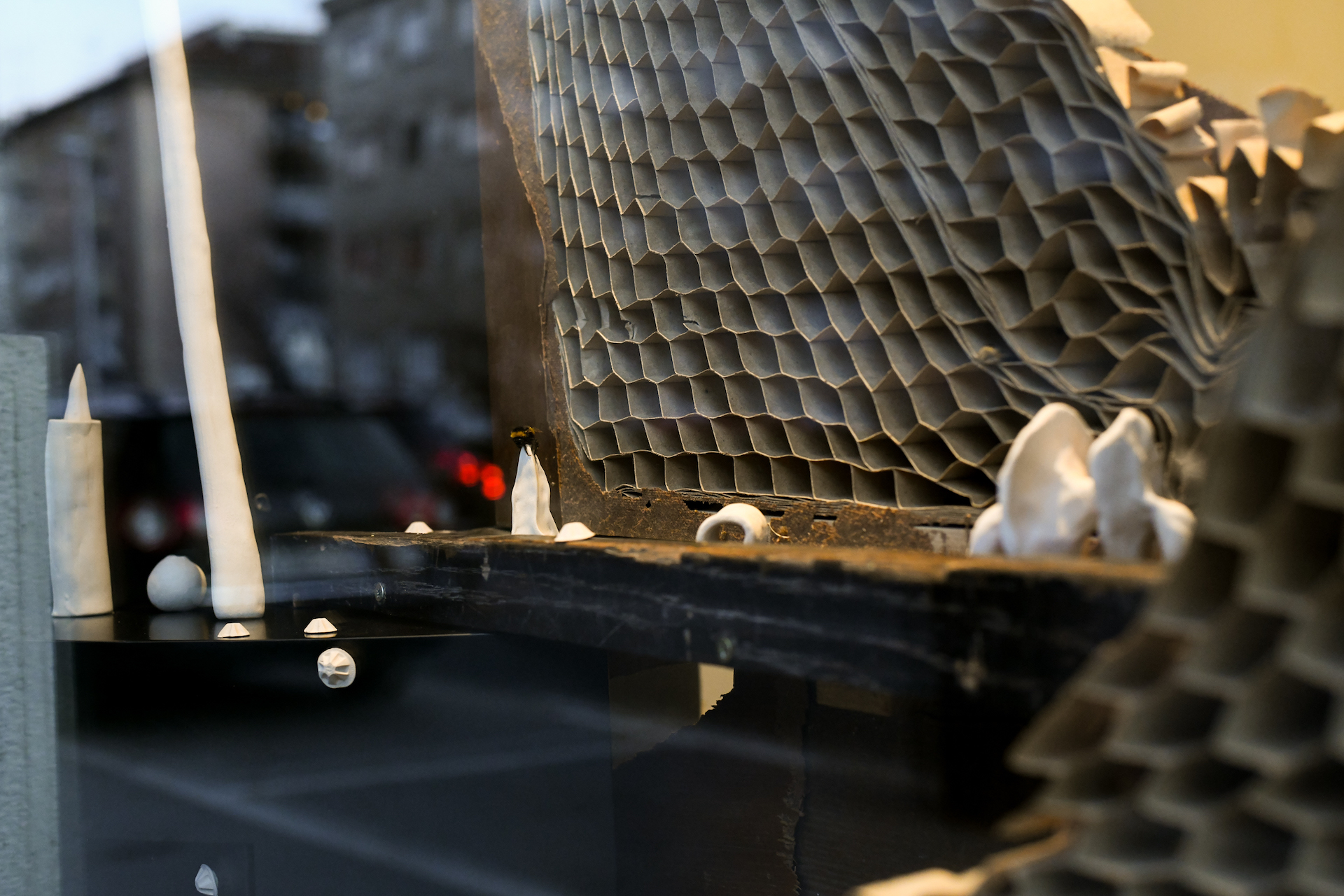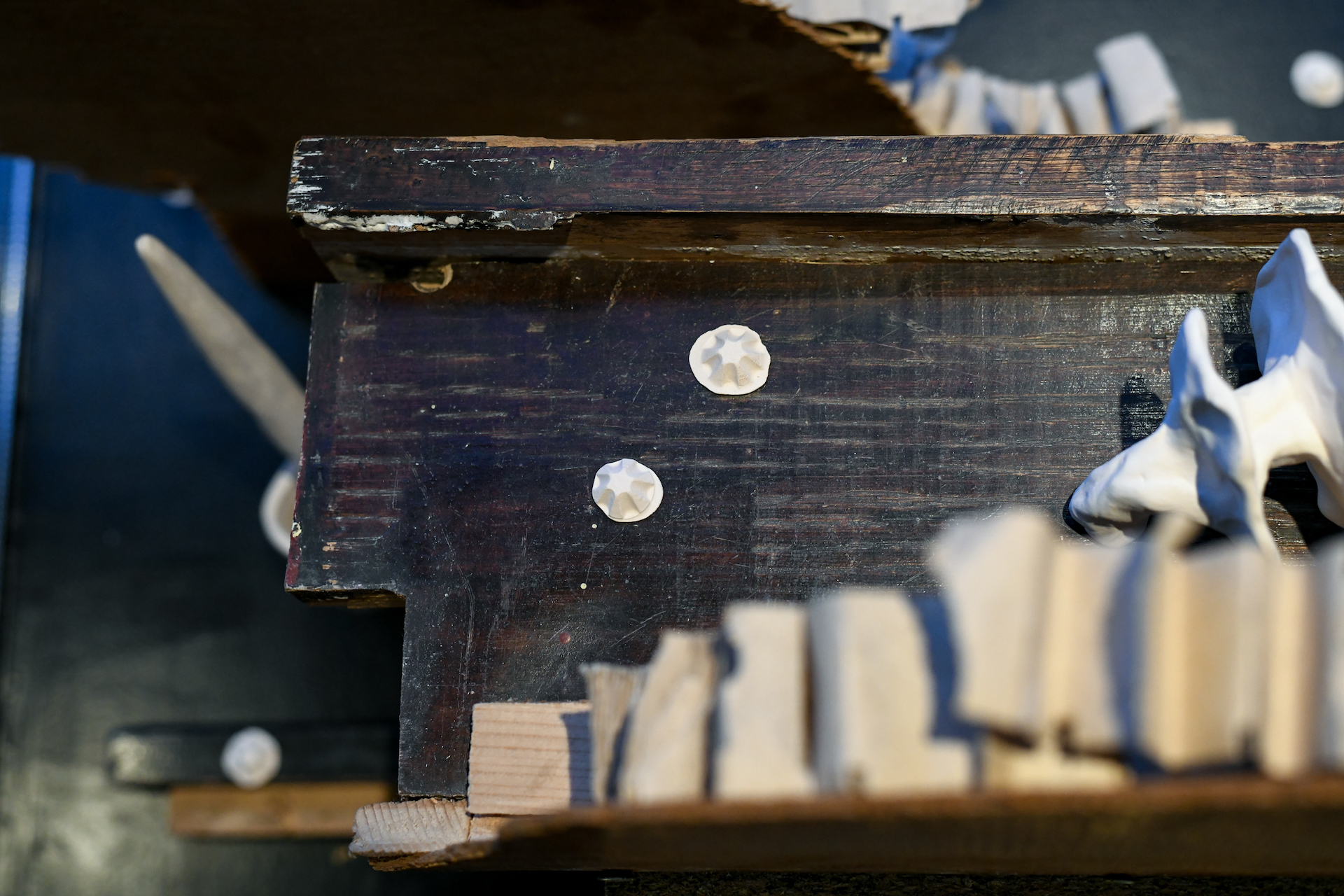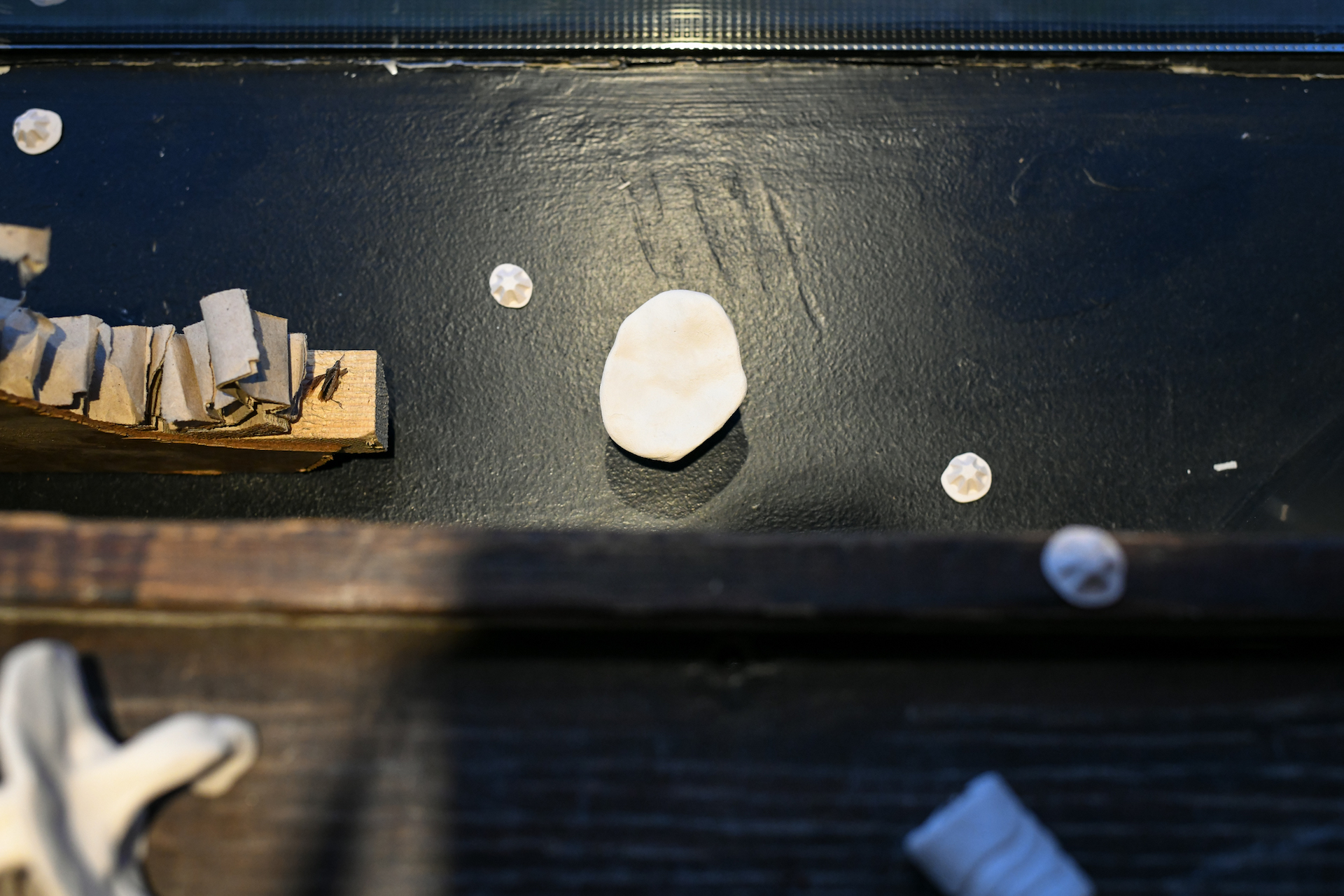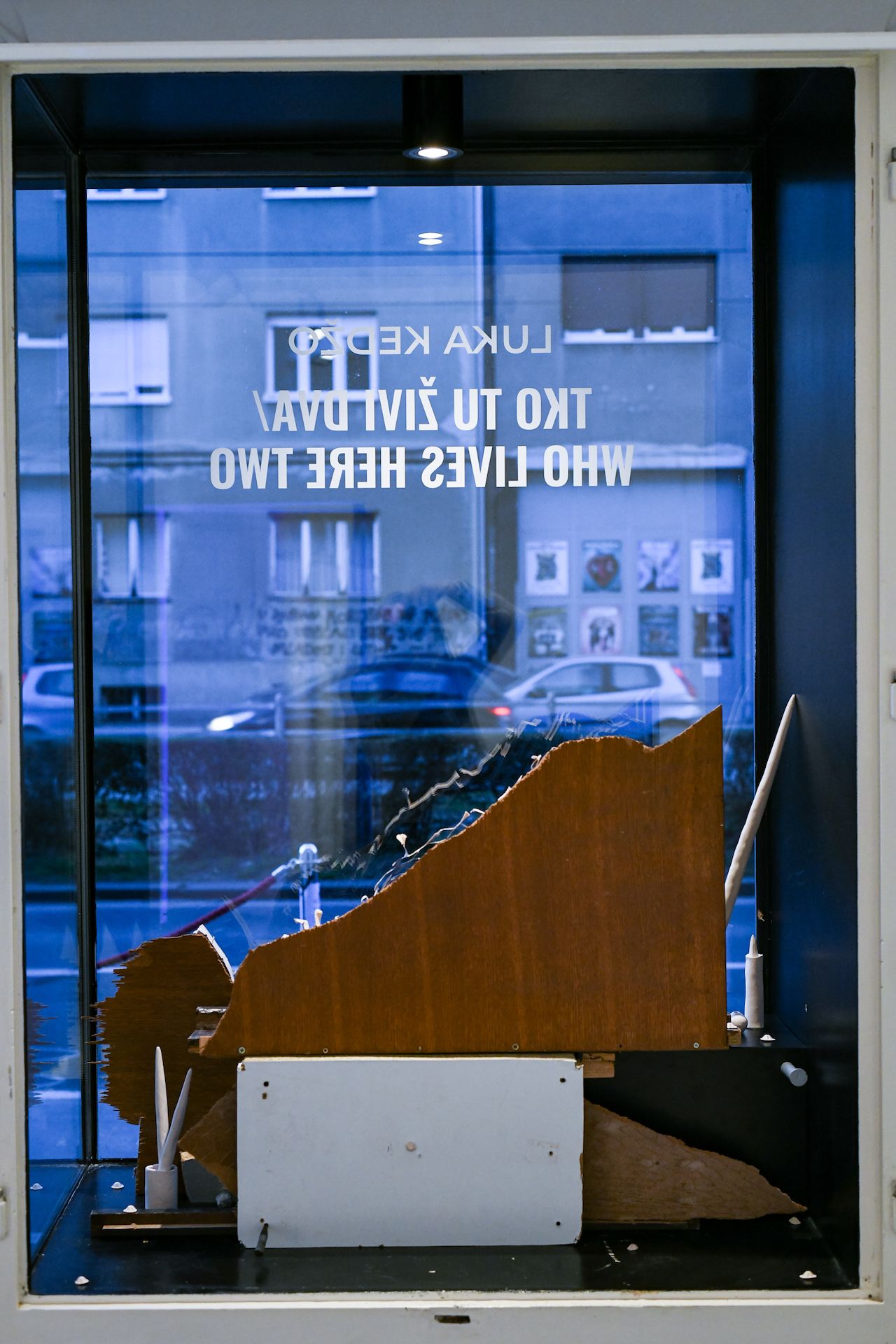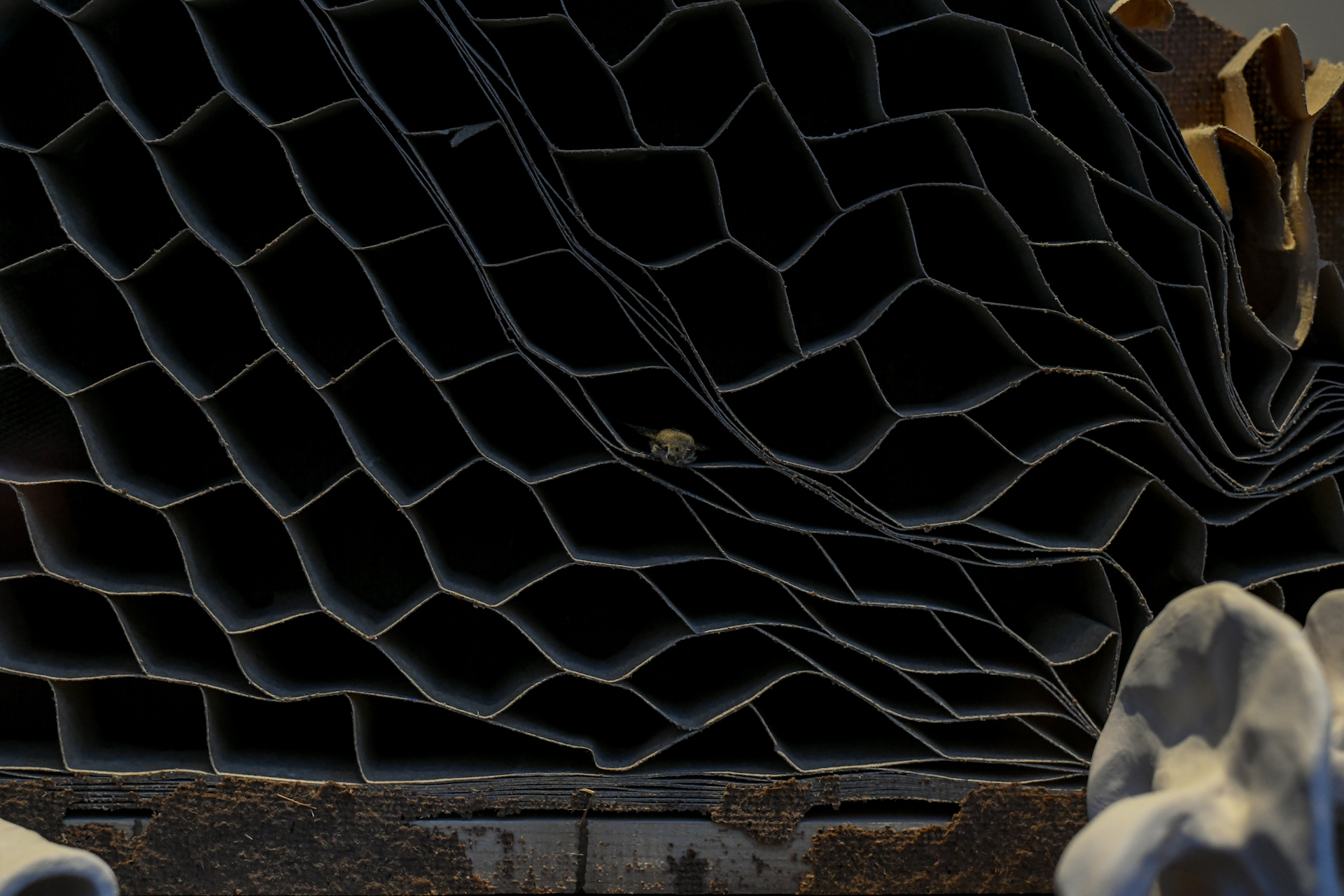Artist: Luka Kedžo
Title: Who lives there two
Venue: Galerija Karas, Zagreb
Photo: Juraj Vuglač
Text: Nika Šimičić
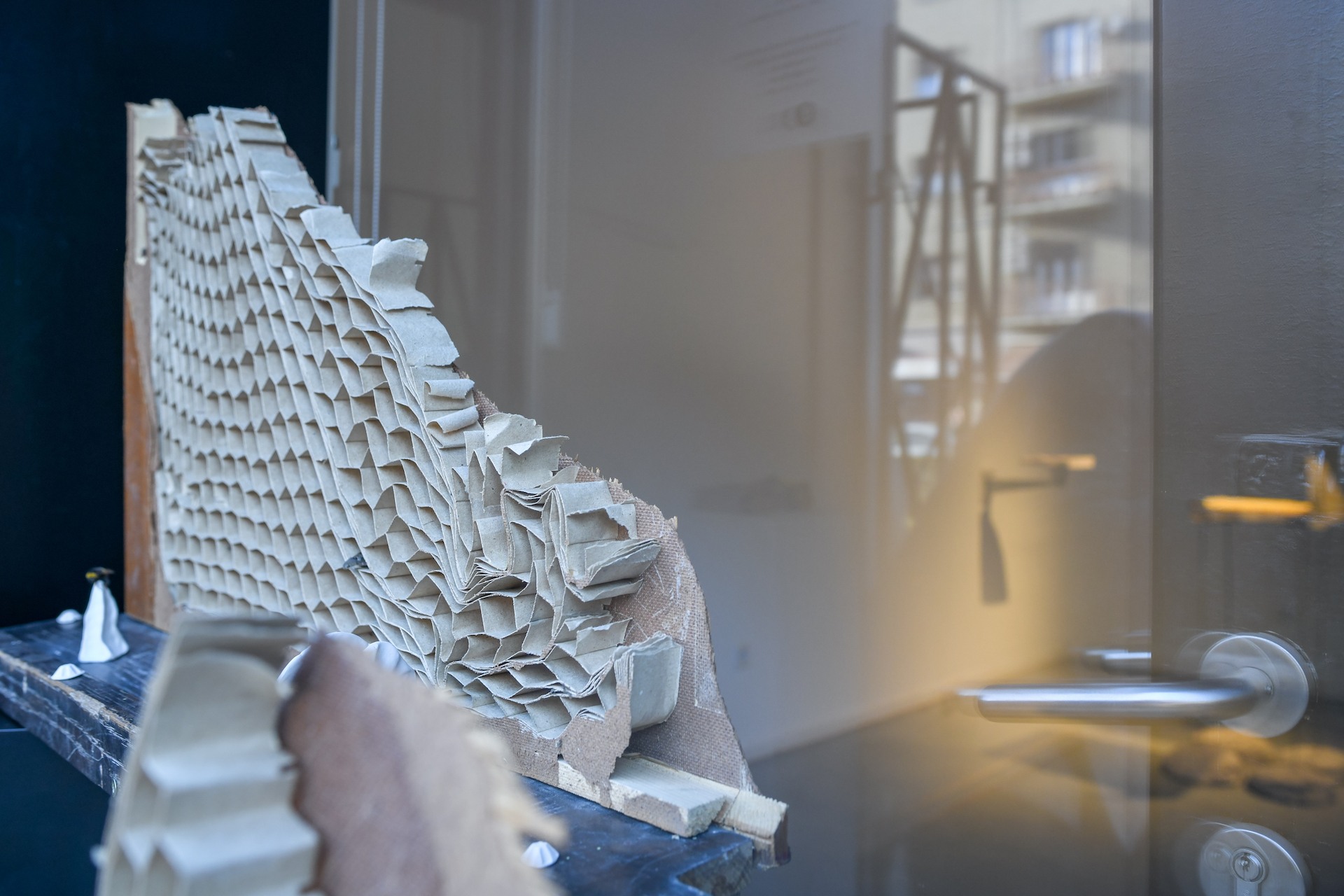
The project is based on a layered spatial installation – a kind of archive of discards objects, found in the immediate vicinity of the artist, in the complex of the former of the Paromlin factory complex. These items themselves have their own history and memory. Yet, by transmutation, by displacement from the original context and by reinterpretation, they gain new life, redefine their meaning, and become hybrid scenography – an intimate, poetic spatial imaginary of an unnamed person tenants. In that sense, it is the space of the Karas Gallery, which with its appearance and the layout of the rooms is reminiscent of someone’s small living space an imaginary tenant, is ideal for the presentation of this type of work.
The collecting practice and the idea of recycling speak strongly about the consciousness of the author and the limitations of the resources we have at our disposal and the way in which we dispose of them. It is a current and important topic, which is characteristic of the artistic engagement of the whole generation of artists, and encourages observers to reflect on the state of our environment and our positions and roles within it. In doing so, the author takes a position from which each matter contains in itself the potential for transformation – the potential of new life.
Every element in this multimedia artist is only seemingly simple. Behind that screen of minimalism hides a layered code of development, progress, decay, waiting, repairing and final disintegration. Unbeaten combinations created by patching of natural and artificial materials collide in strange new objects, which, depending on the point of view, we can call it Frankensteinian or eclectic. Collision are organic and inorganic. Scarab’s mythological immortality meets death – that symbolic, total for all mankind. Classics and futurism collide, utopia and dystopia, marble and plastic, beginning and the end.
The aesthetics of Kedžo’s work undoubtedly belongs to post-internet art. Done film scenes / spatial installations / imaginary spaces and metanarratives on some way of reproducing the structure and disposition of the network, where each element is a “coded” link to other aspects of the entire system. In that sense, art also ceases be merely a commentary on the cultural, social and political context and begins actively to question the capitalist hyperproduction of desires, the programmed infrastructure efficiency in which we live, begins to subversively oppose man to technology and indicate dystopia and general disappointment. This kind of contemporary art has no narrow, an elitist view, on the contrary, nurtures a broader, universalist perspective, and that is exactly what constructing a utopian and universal context makes it relevant.
To a question posed in the title (posed to act as a paniena quest for answer) we will not get an answer. It is a rhetorical riddle. Who lives here? Any who, everyone and no one. The material exists and will exist independently of us, in physics or digital form.
Text – Nika Šimičić
Gallery Coordinator – Marija Kamber

